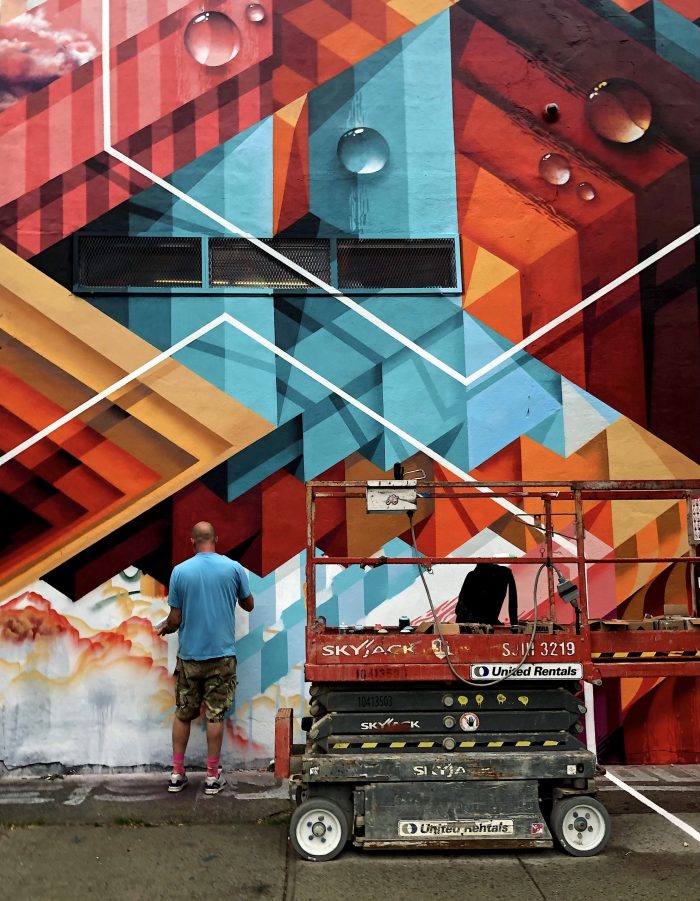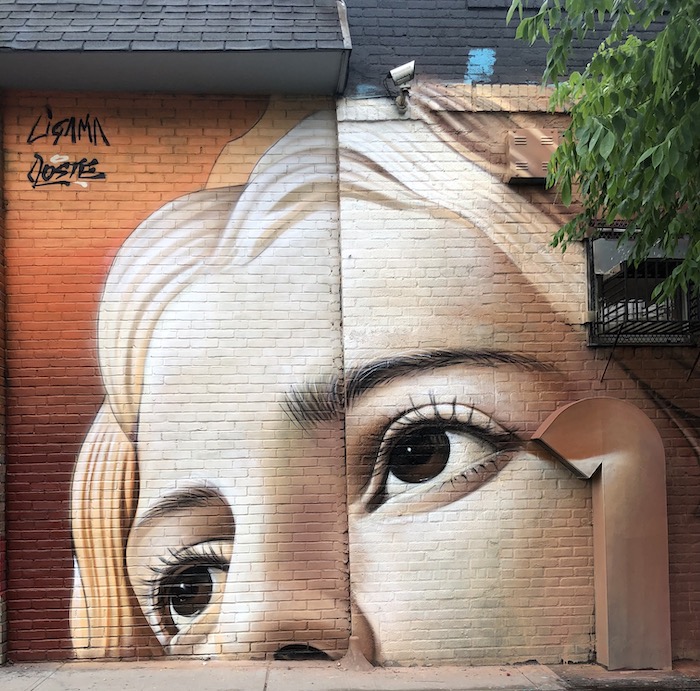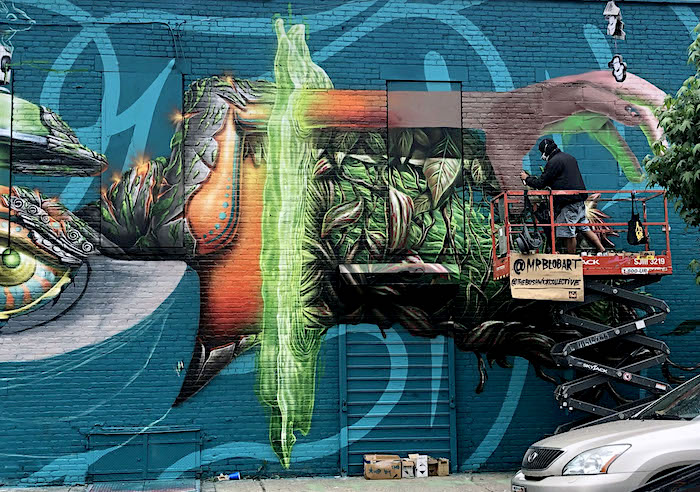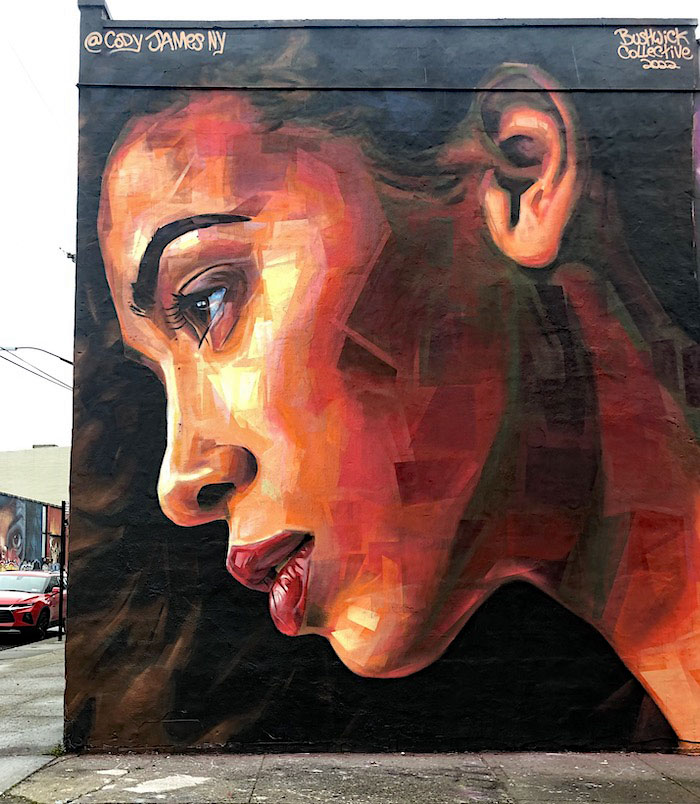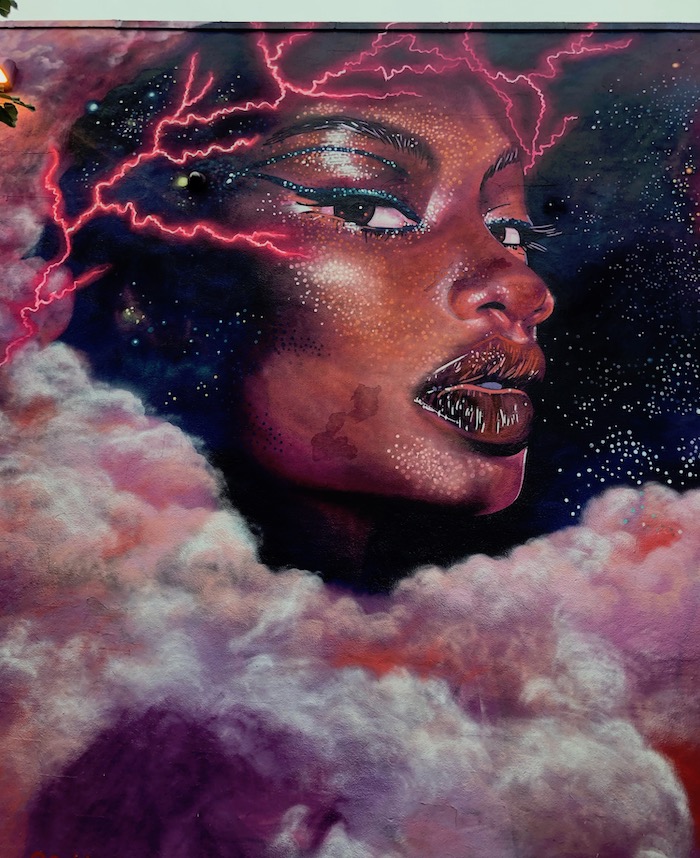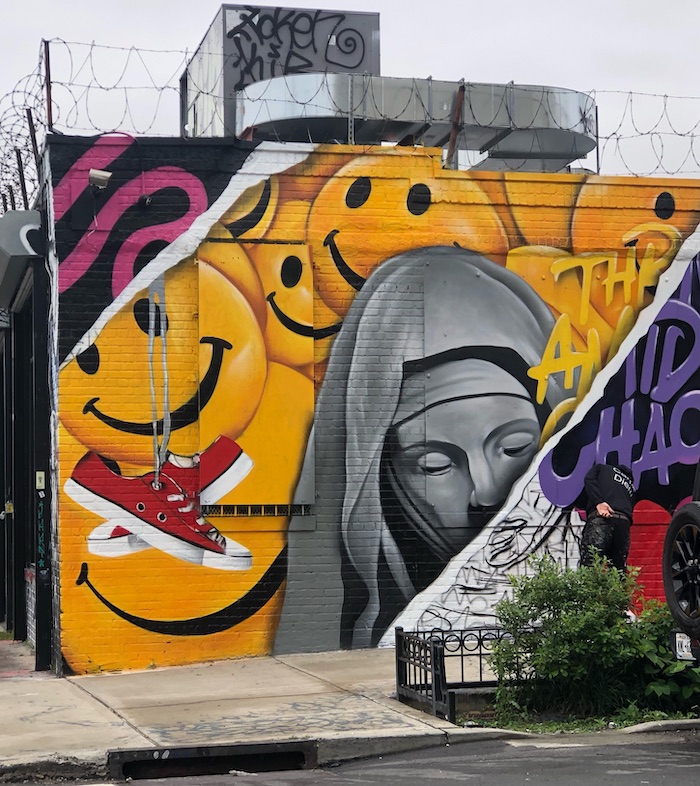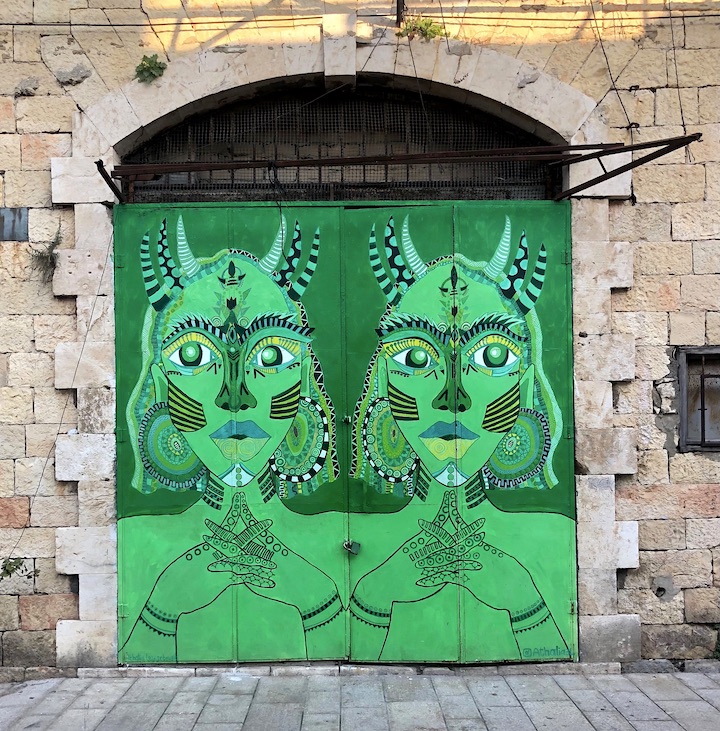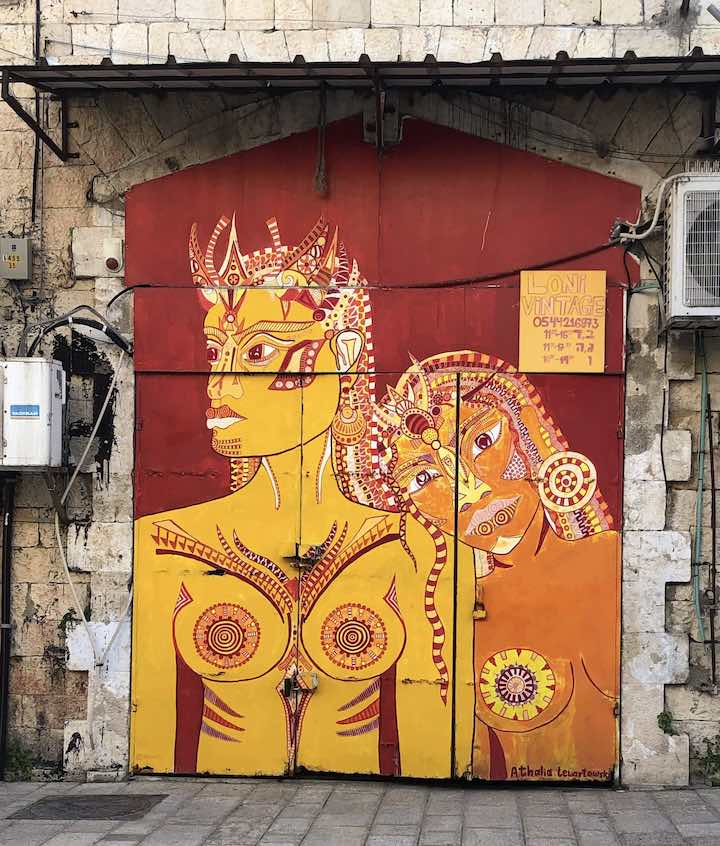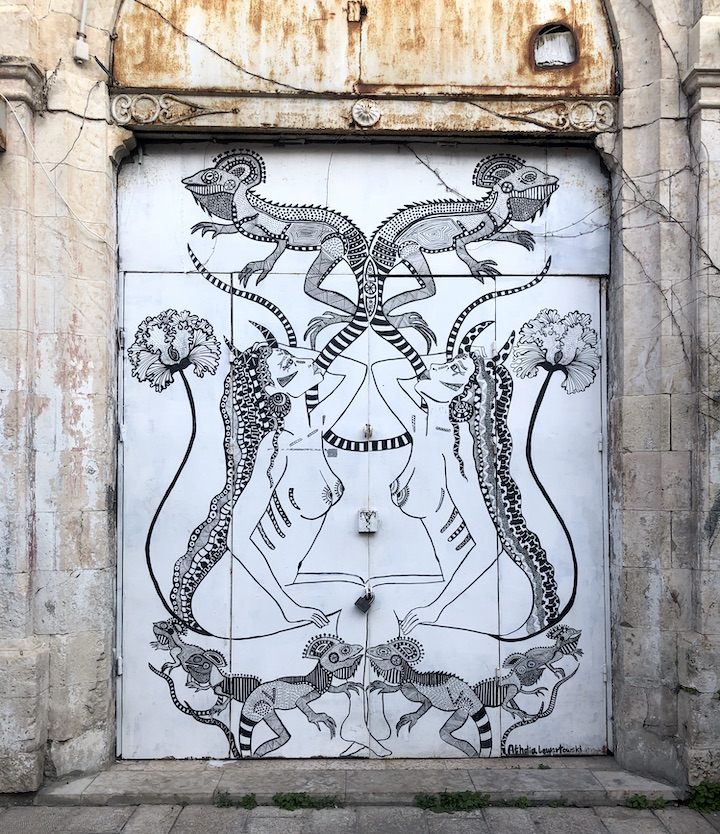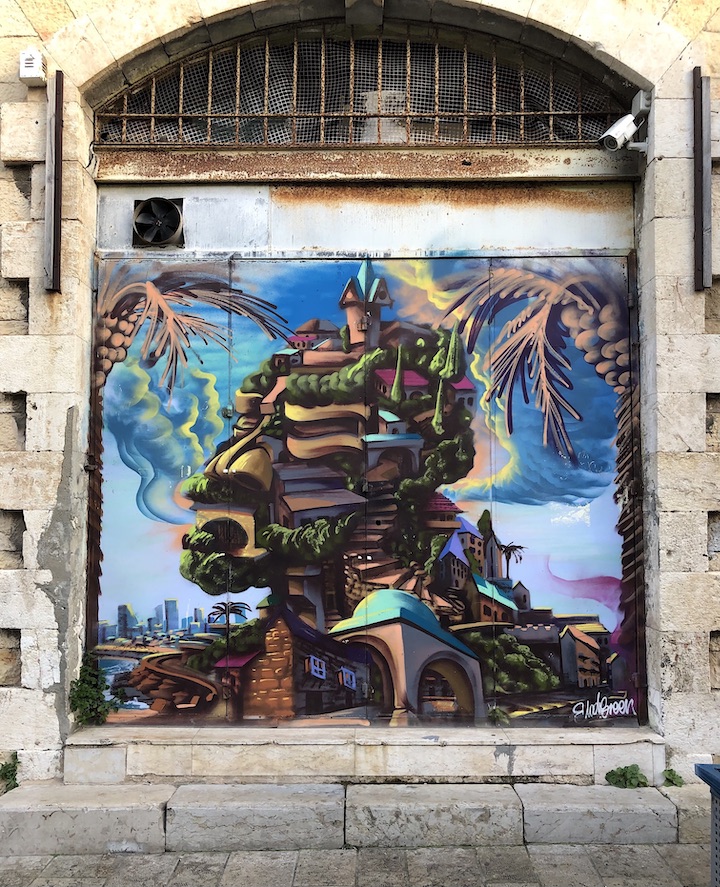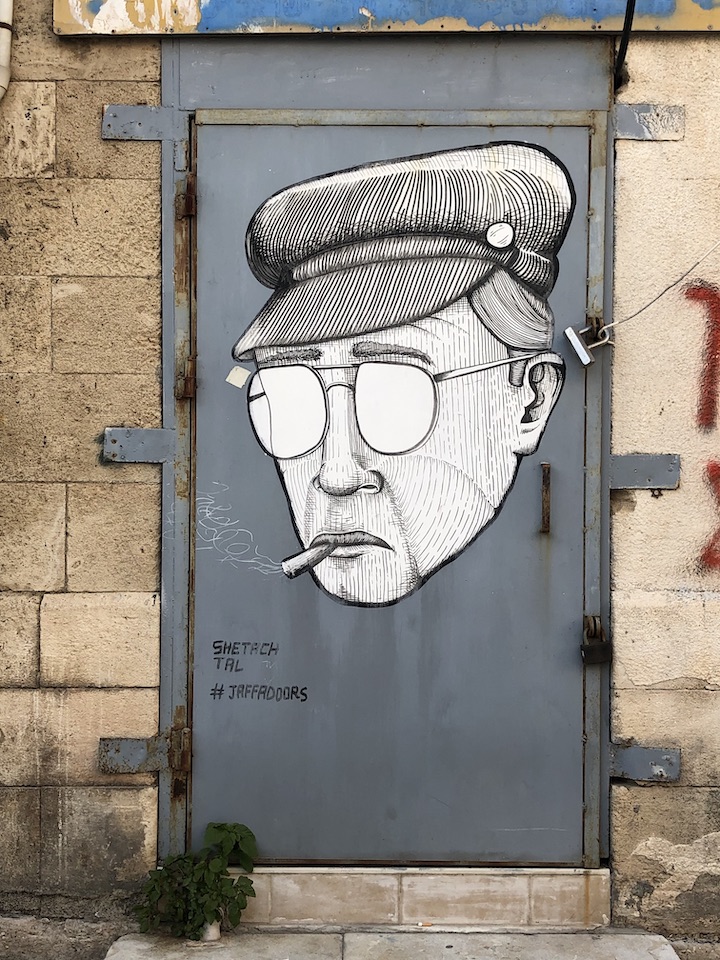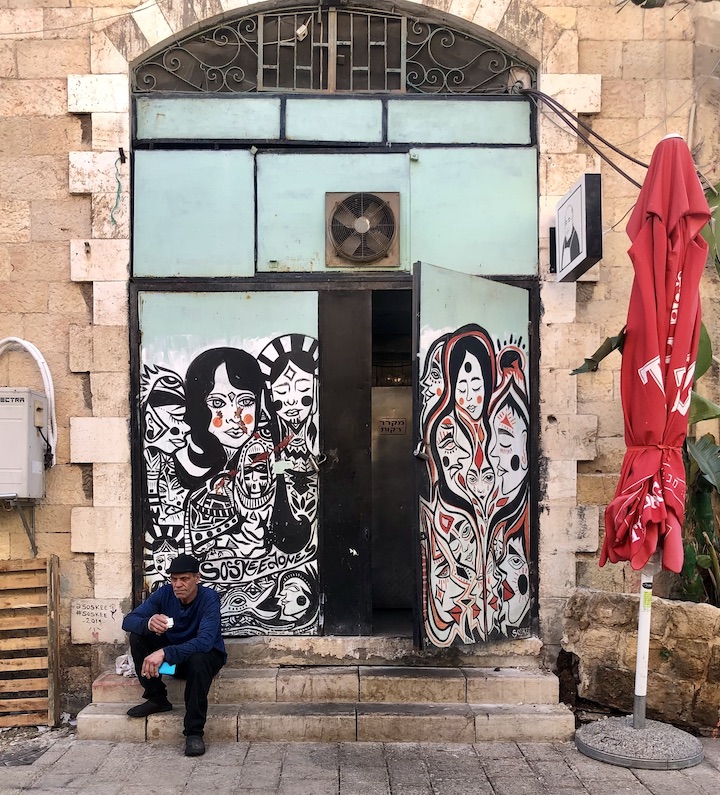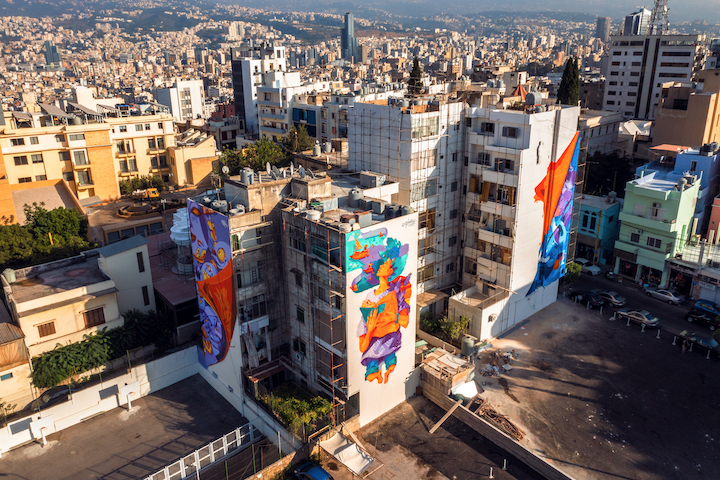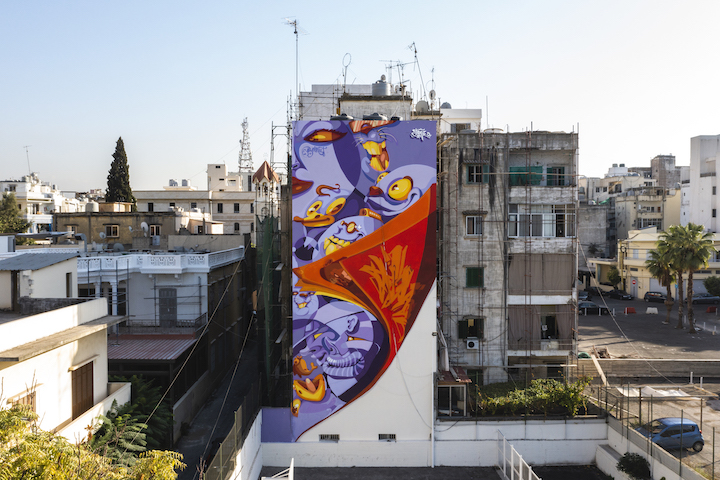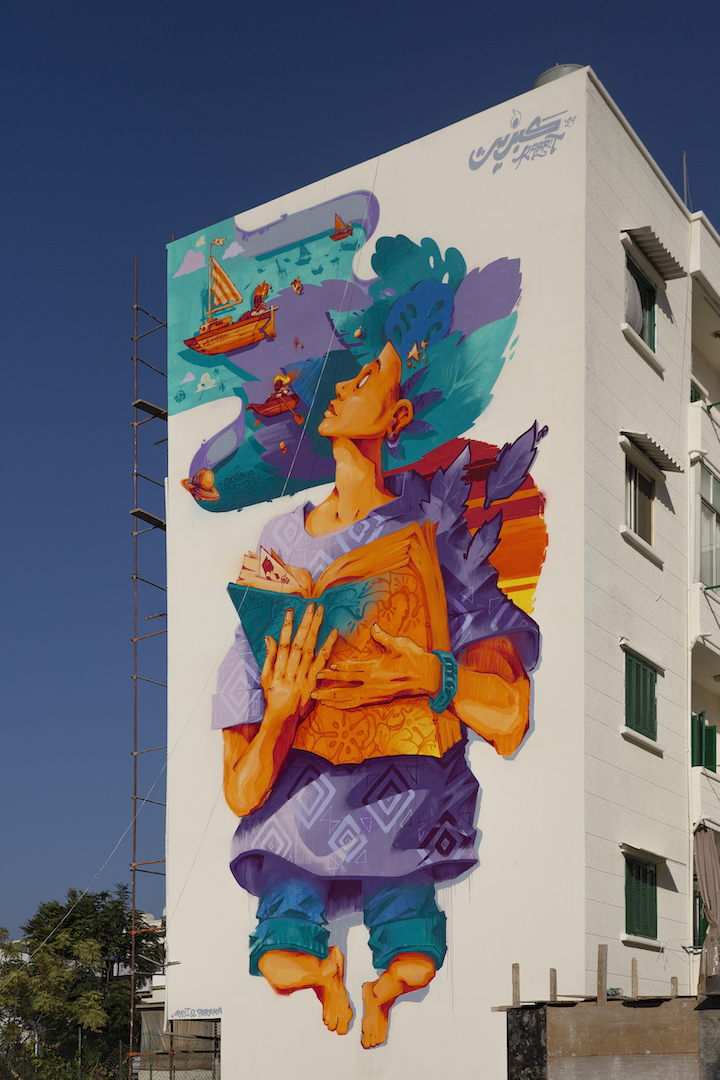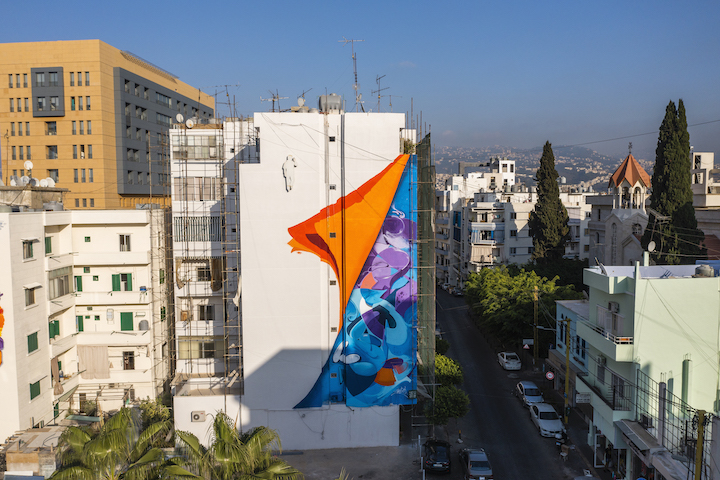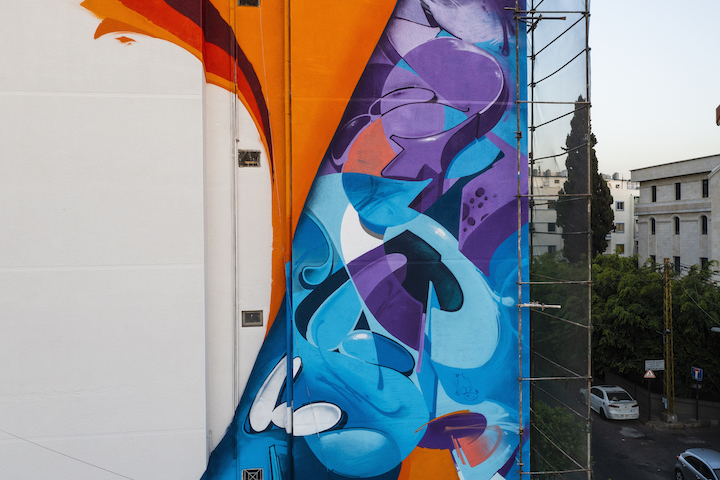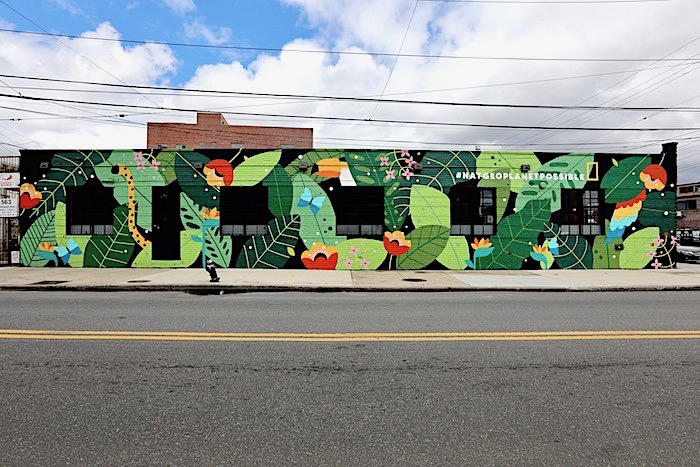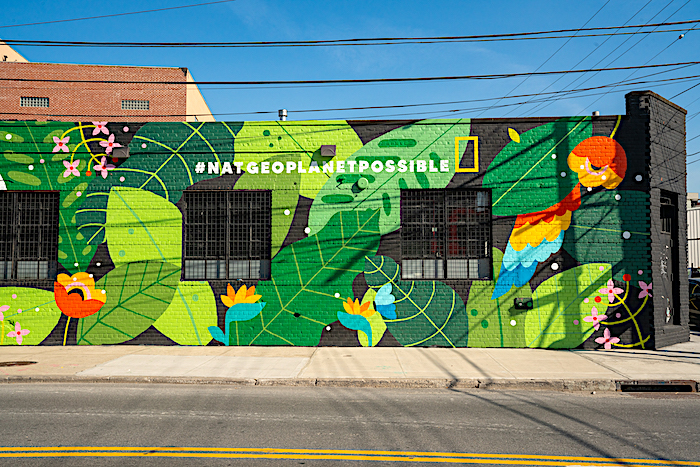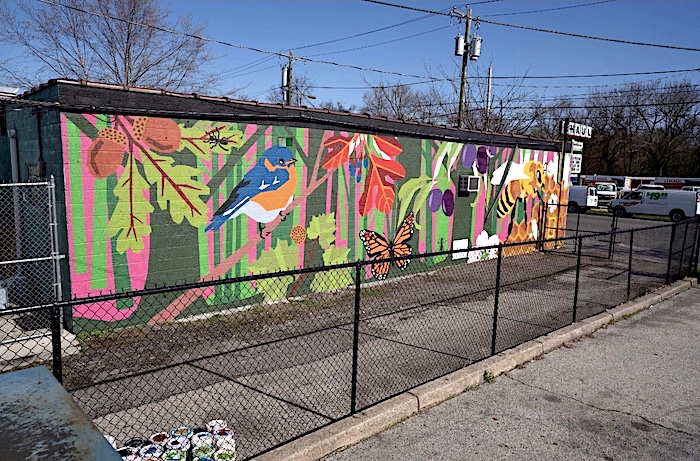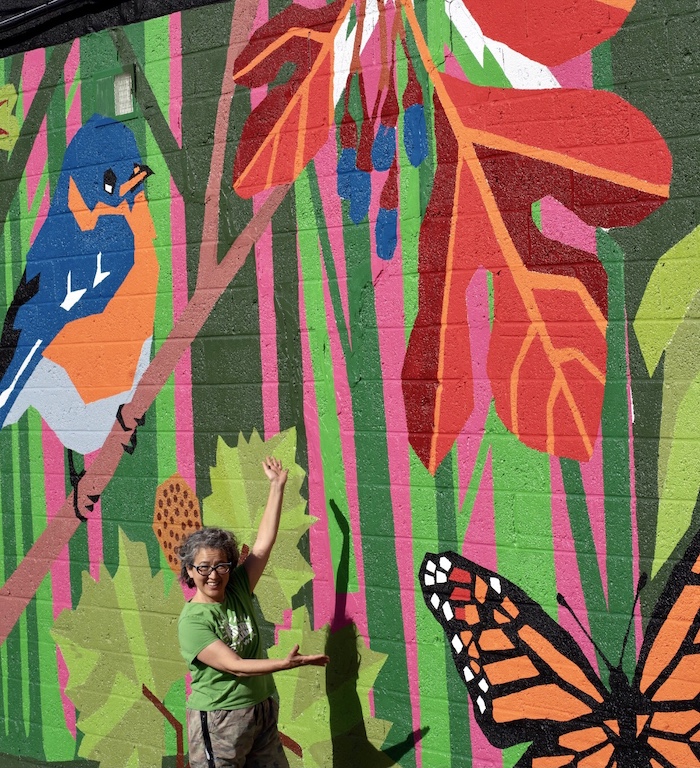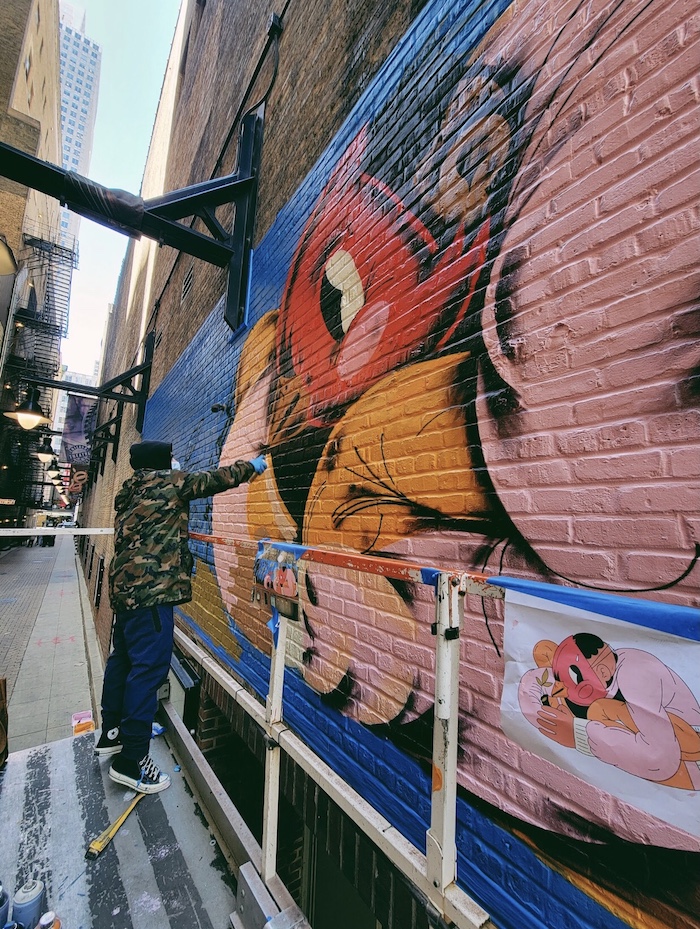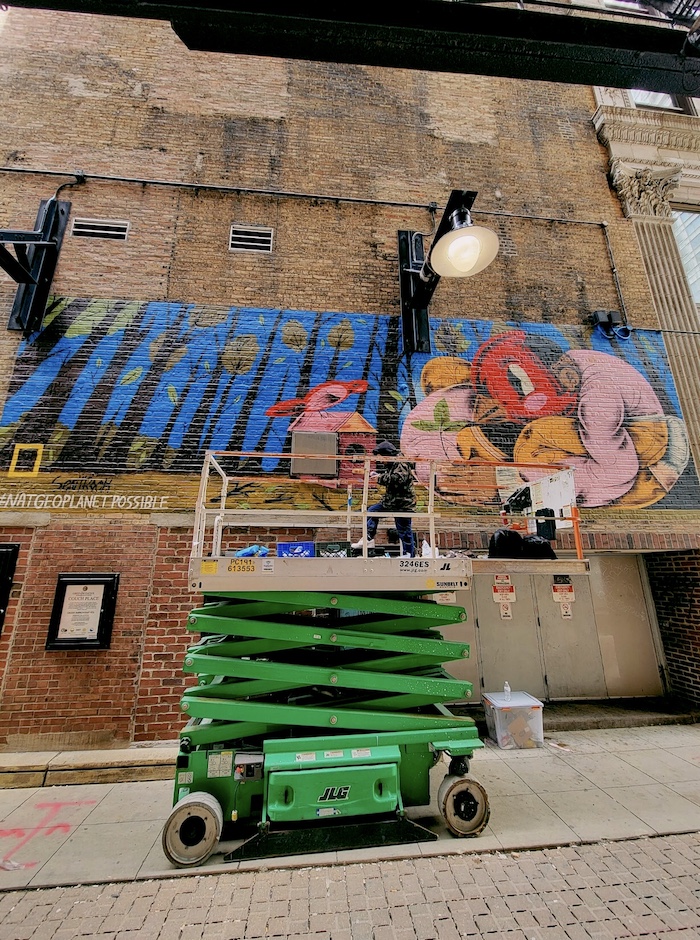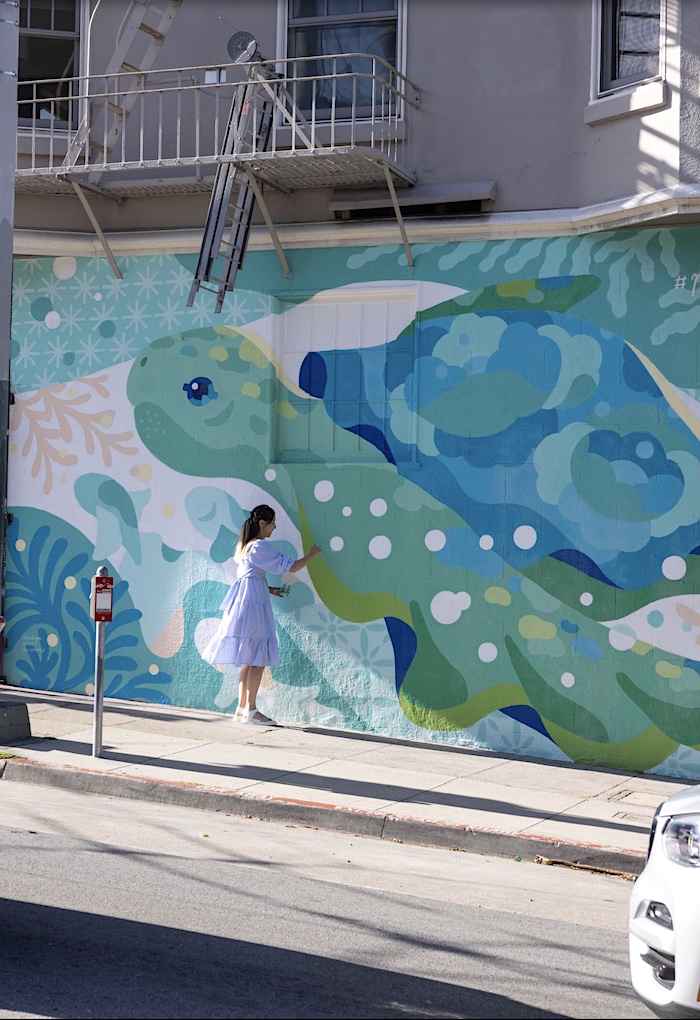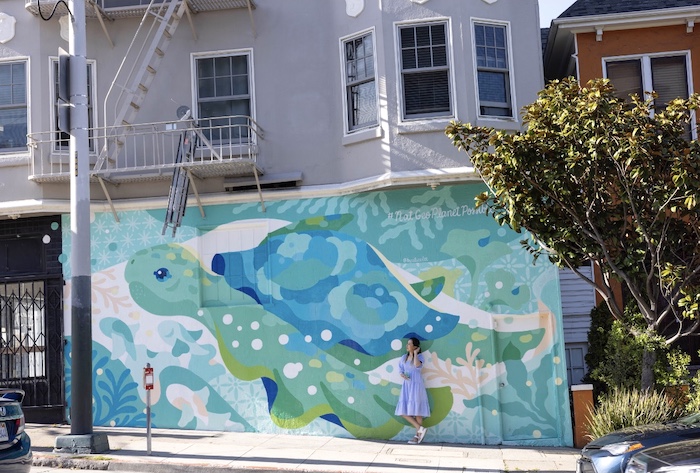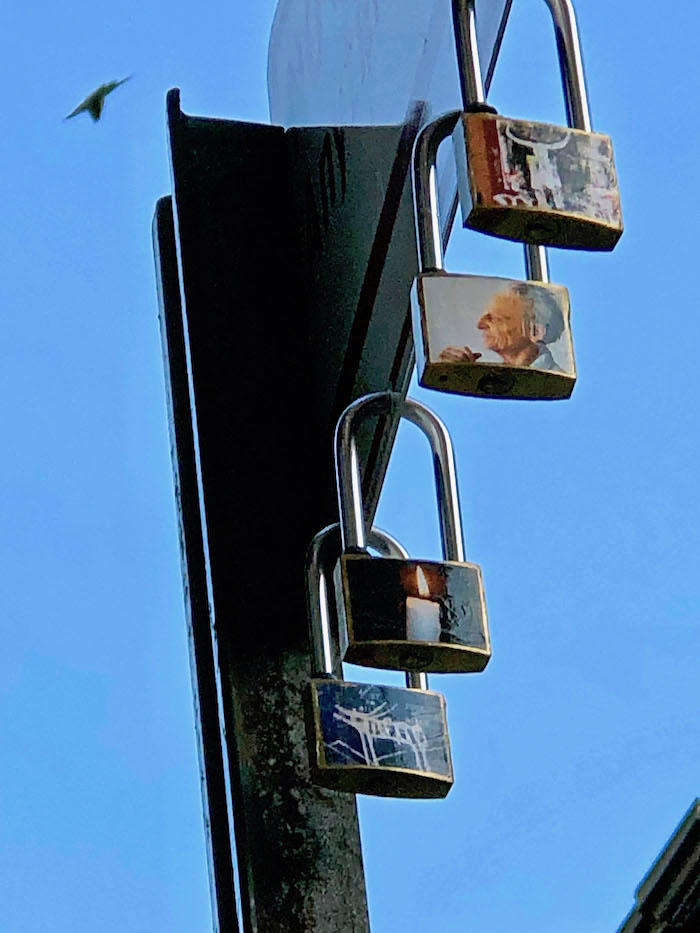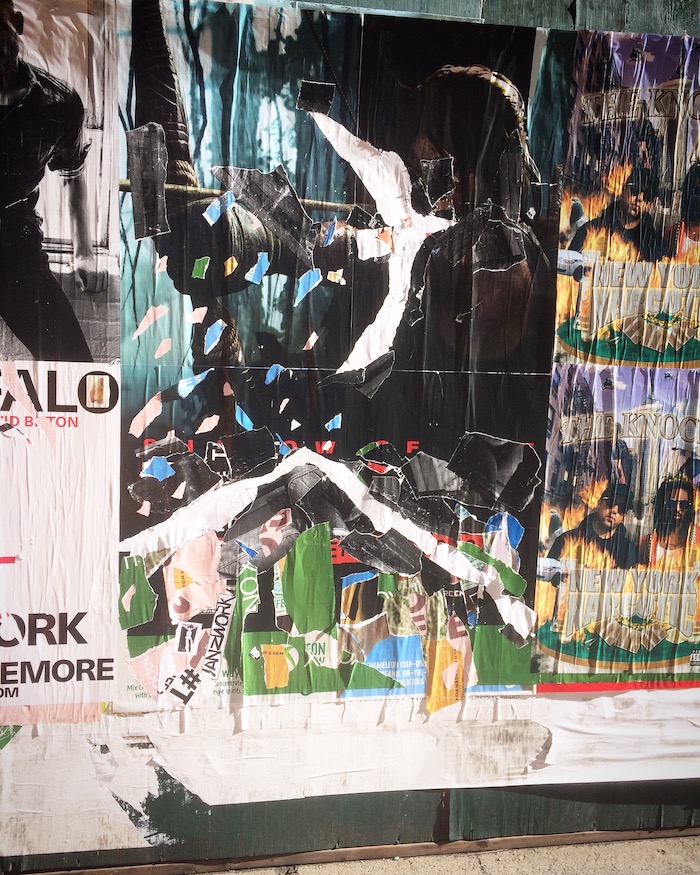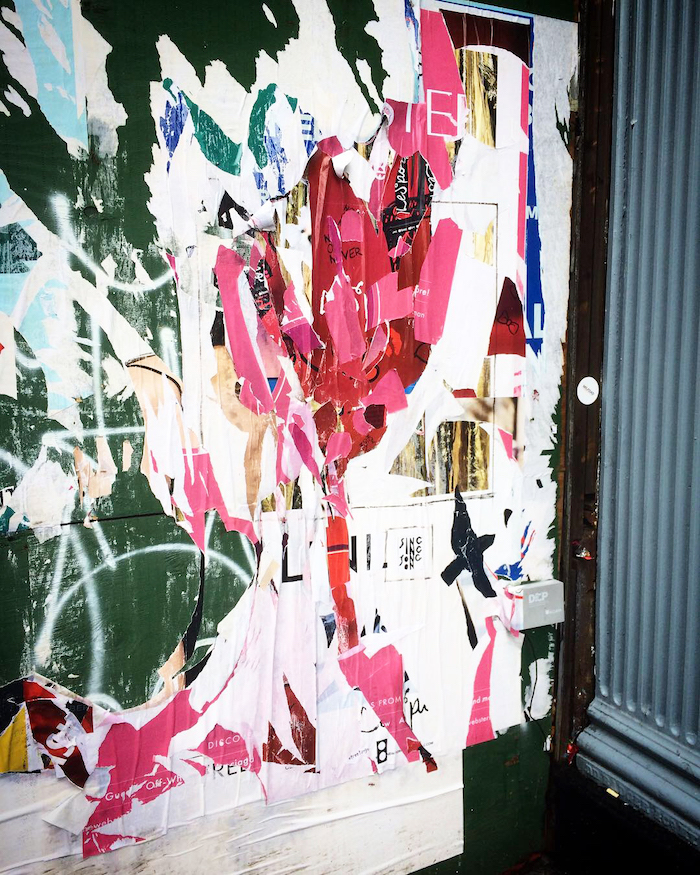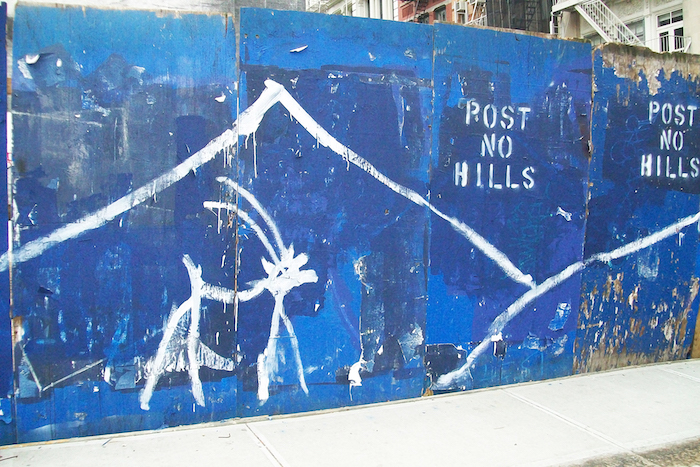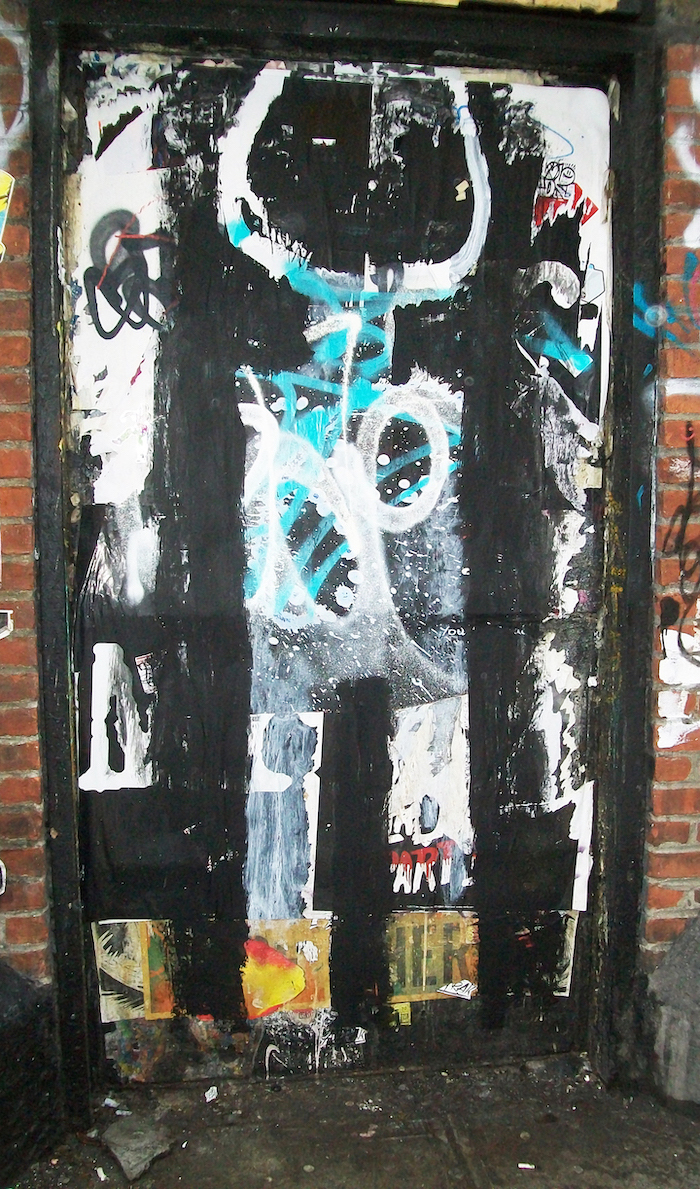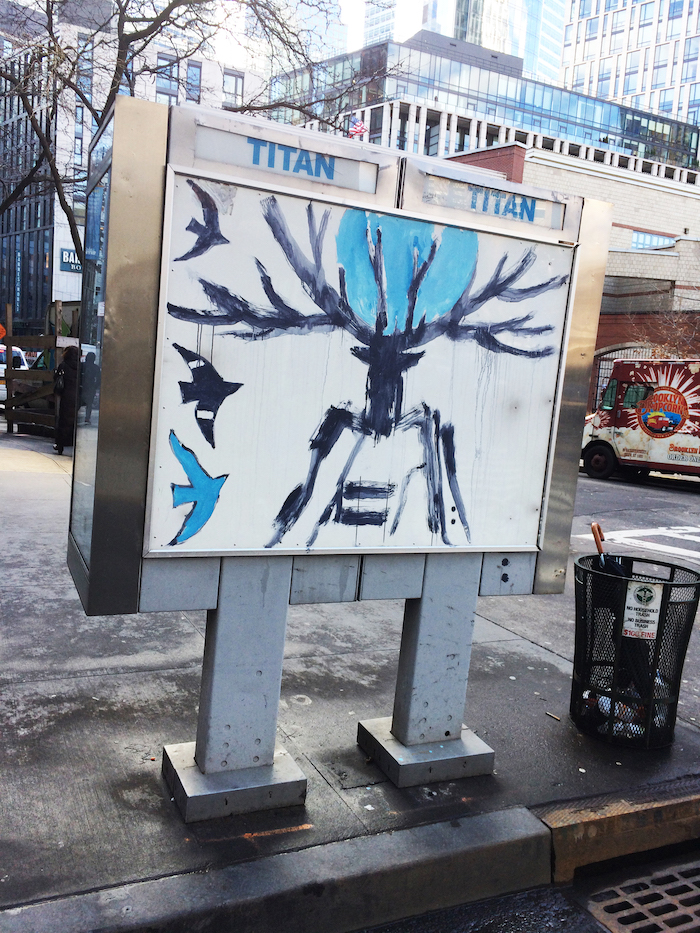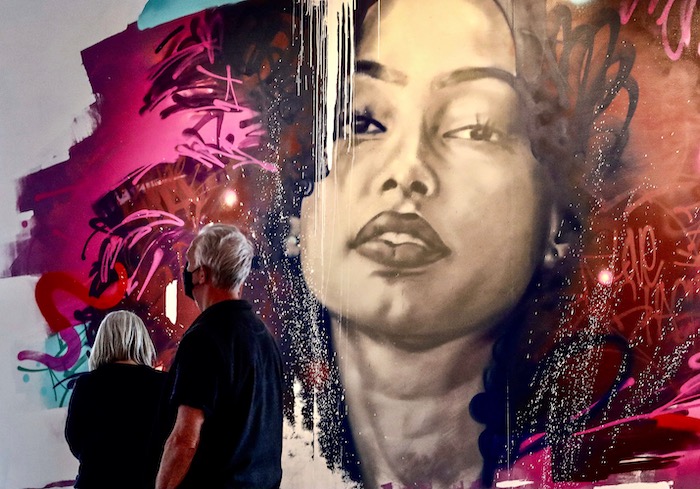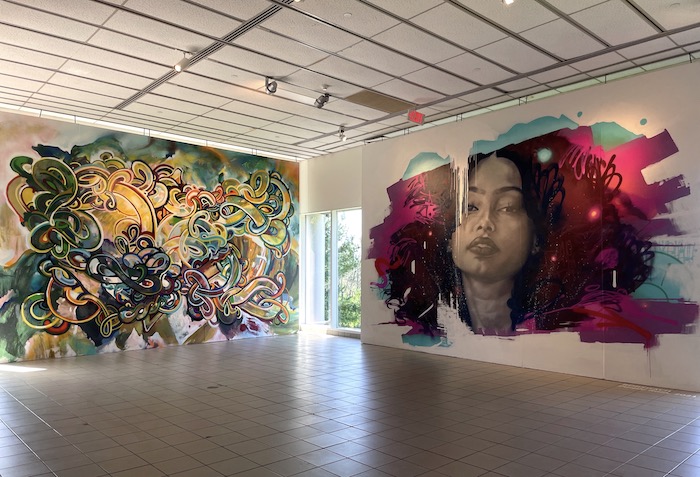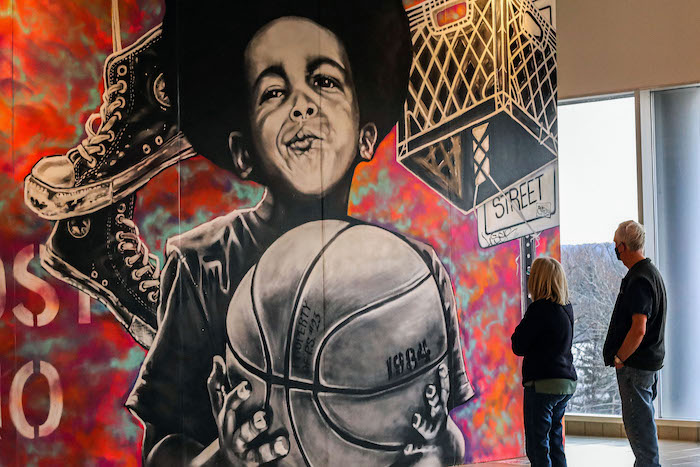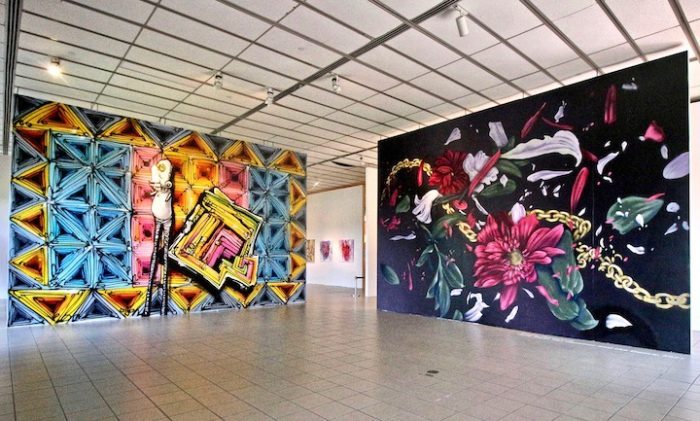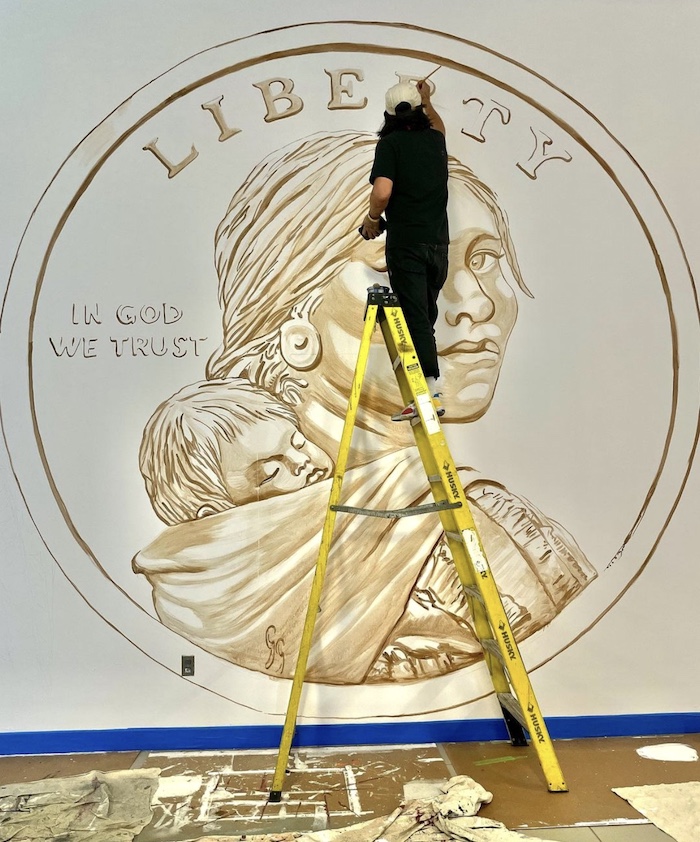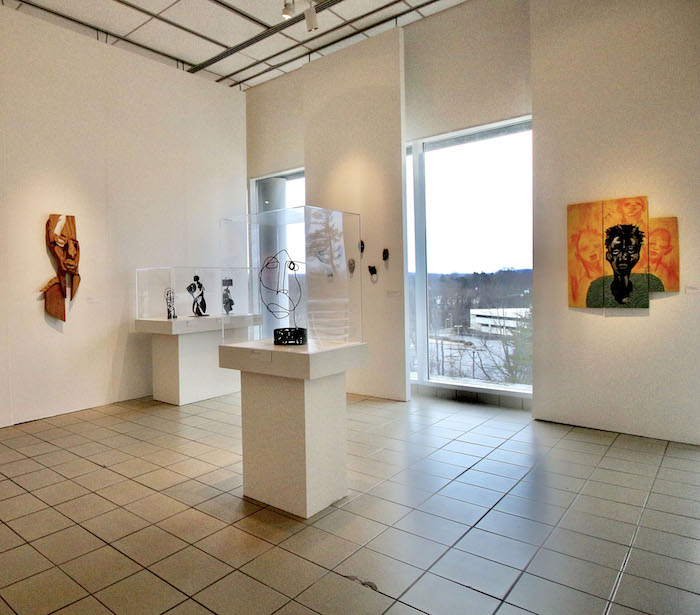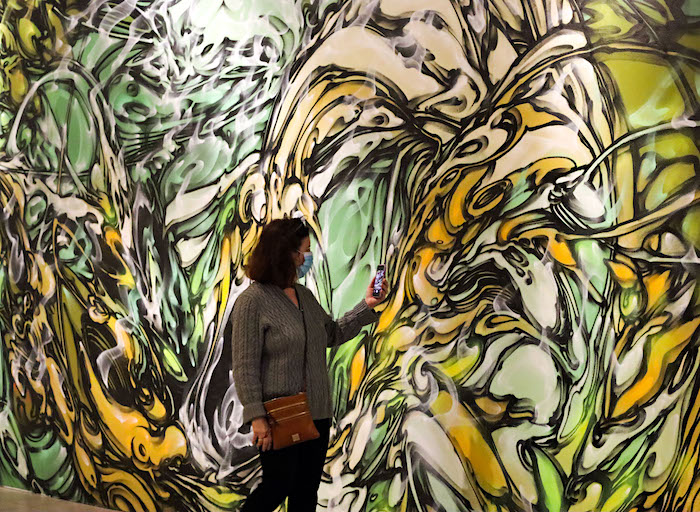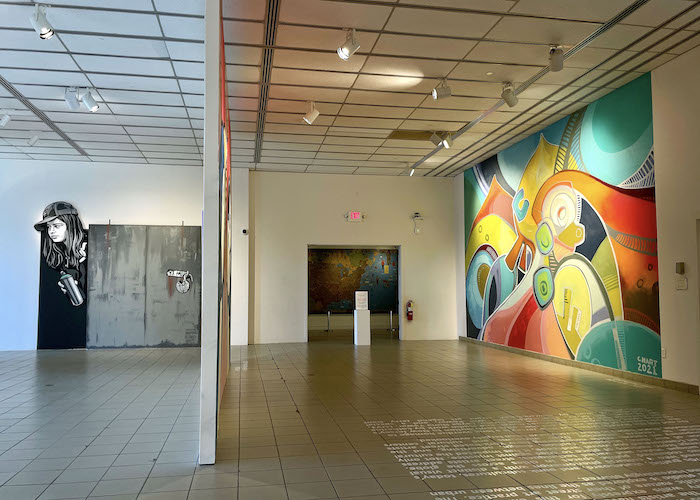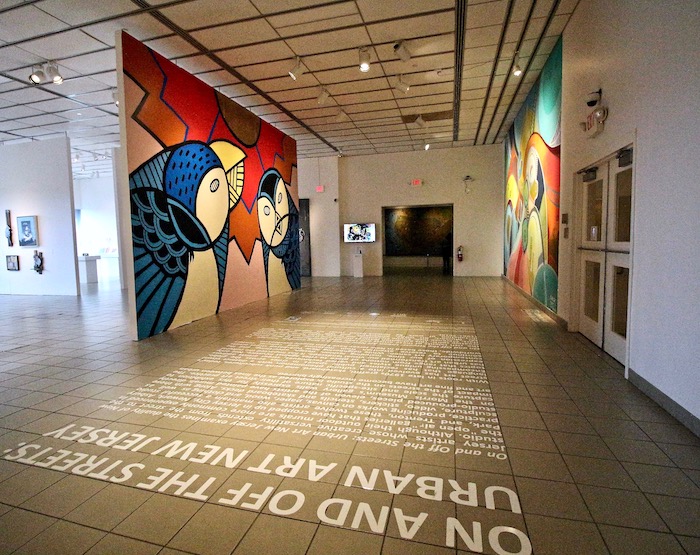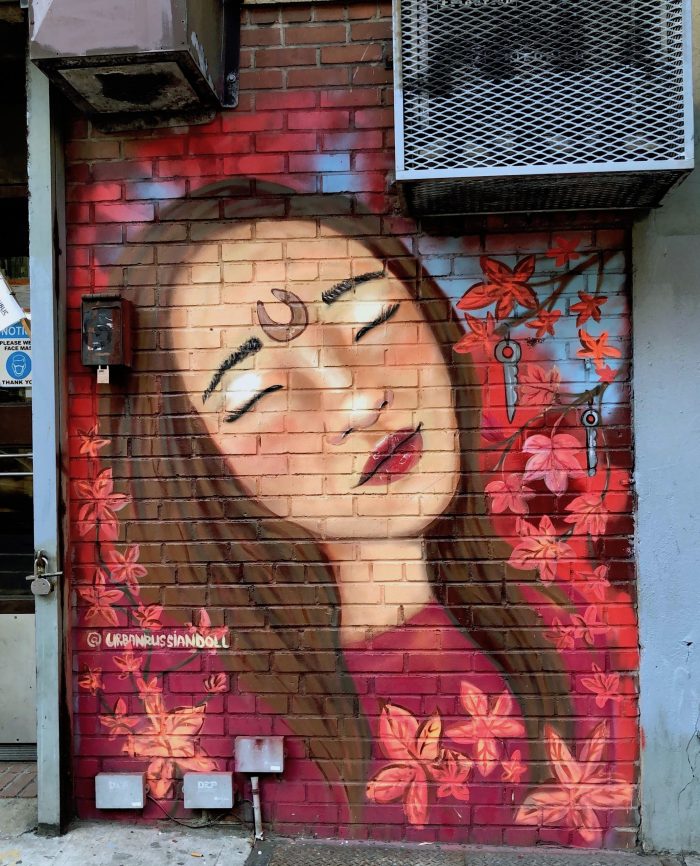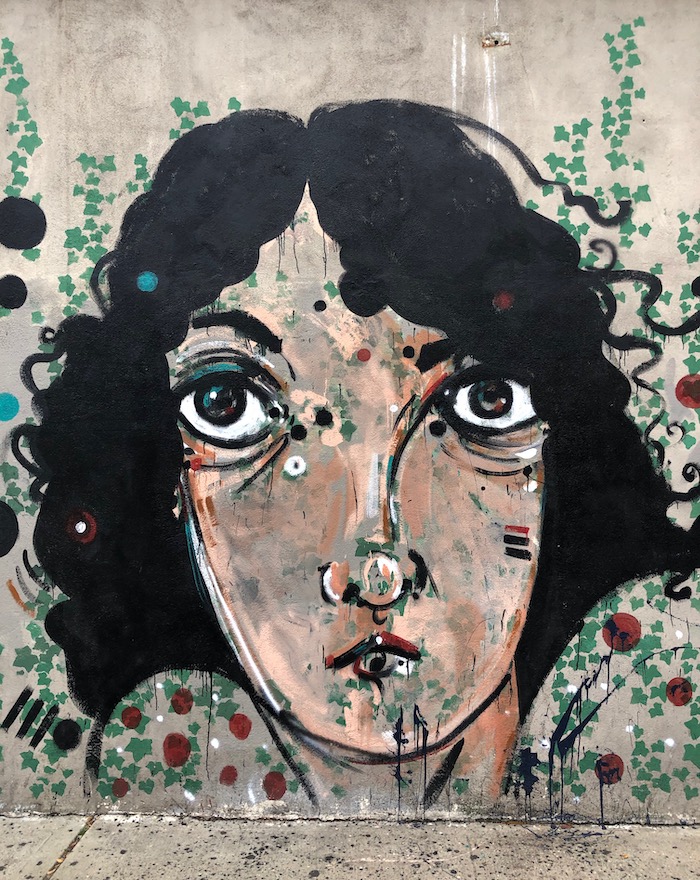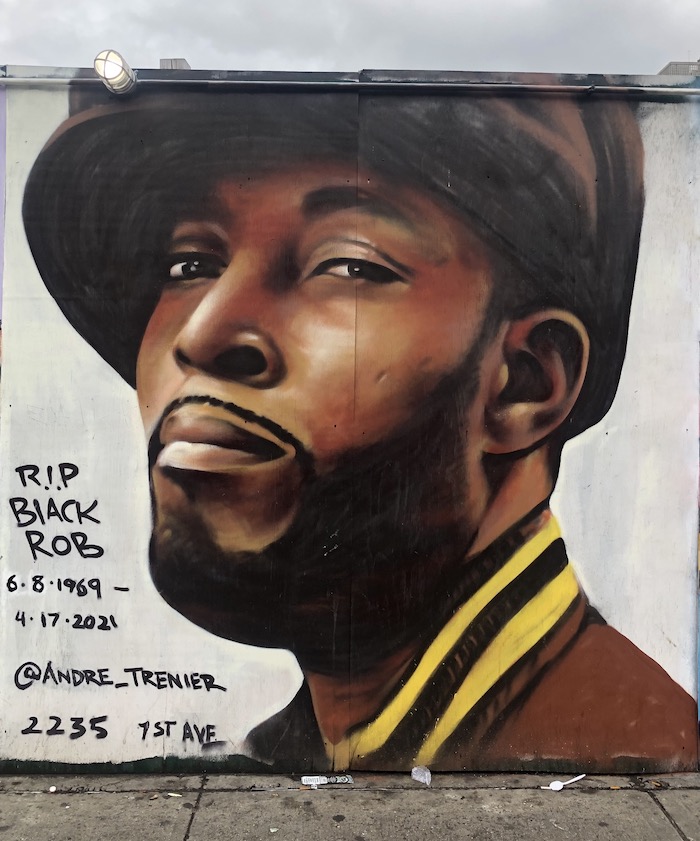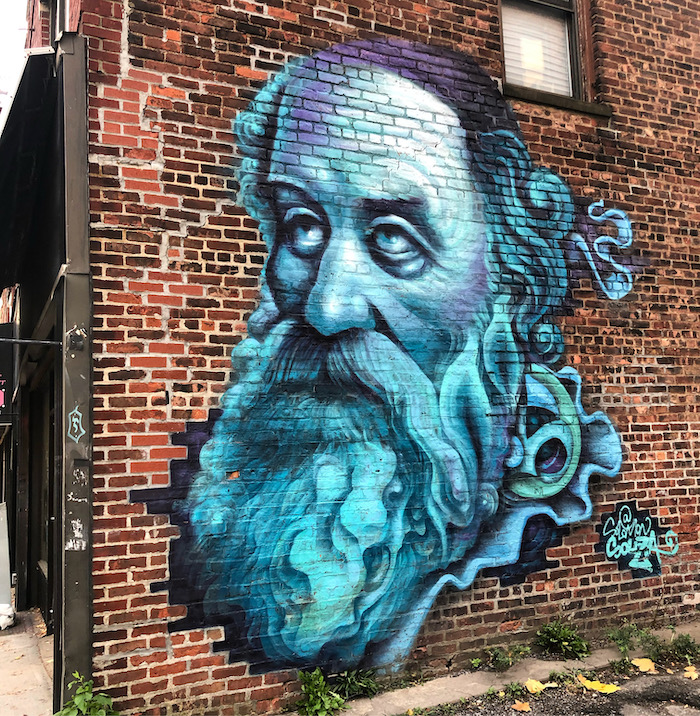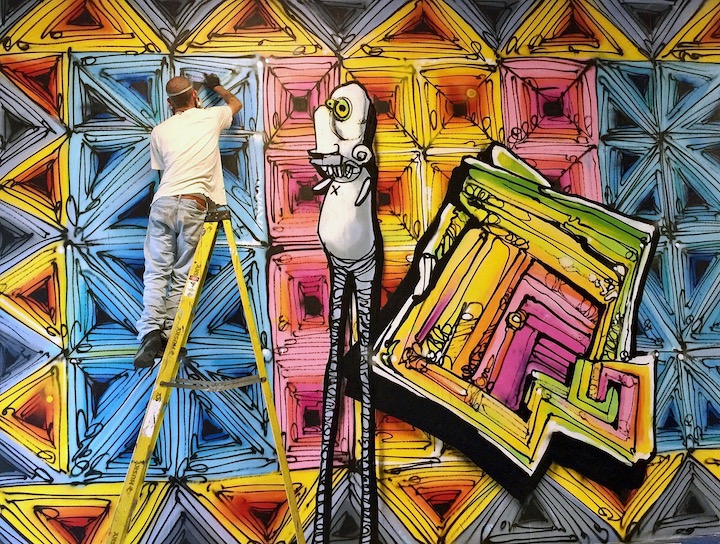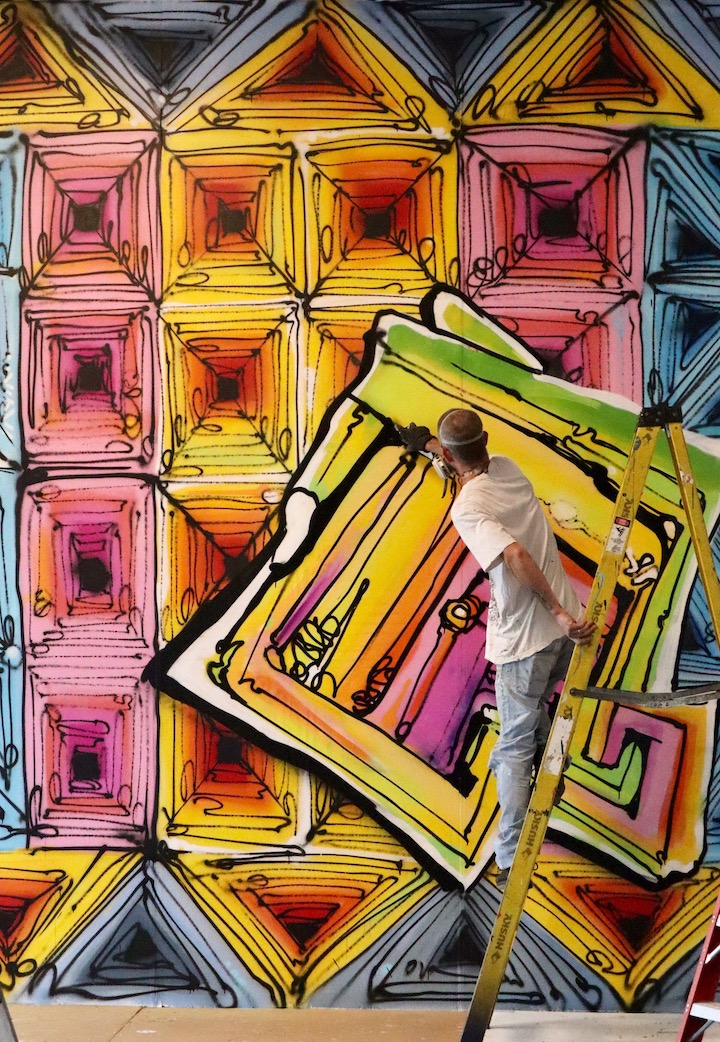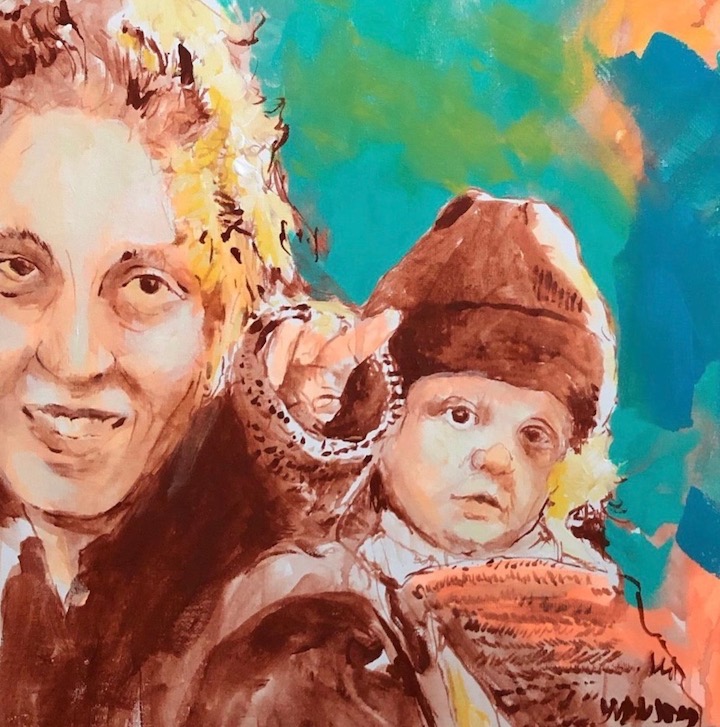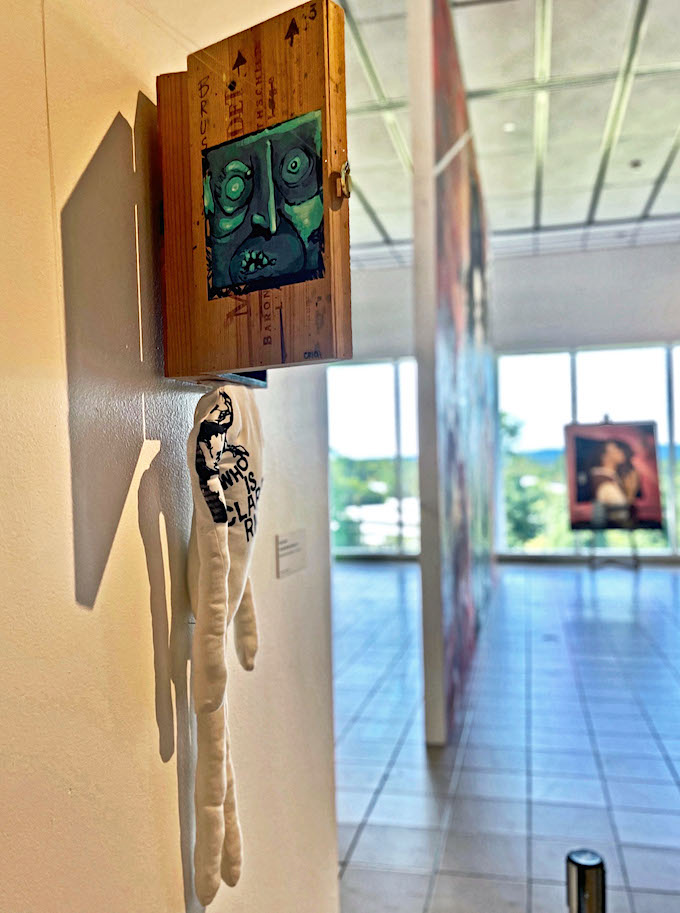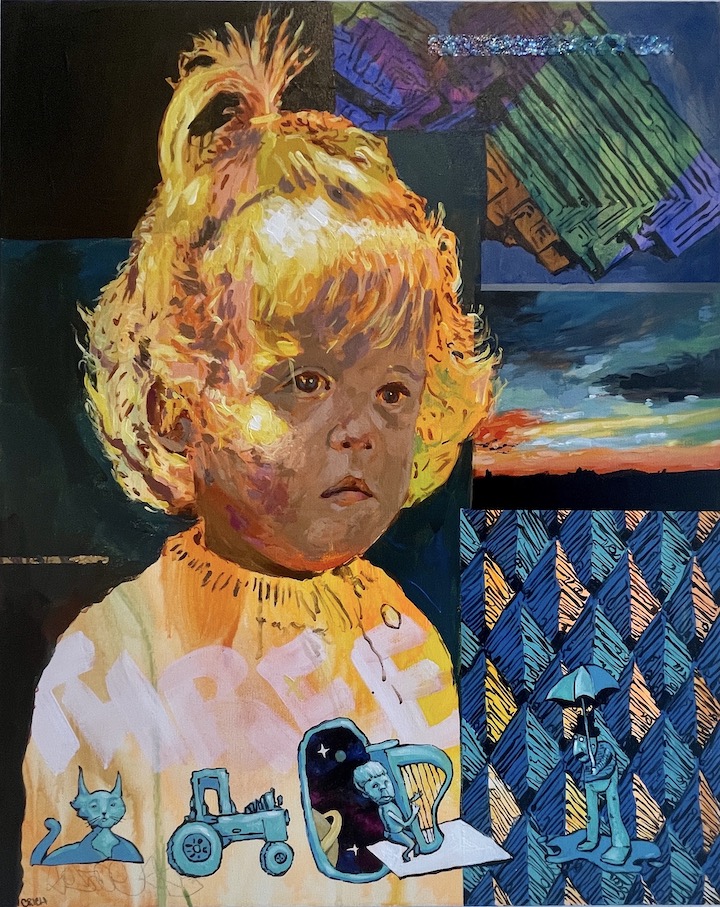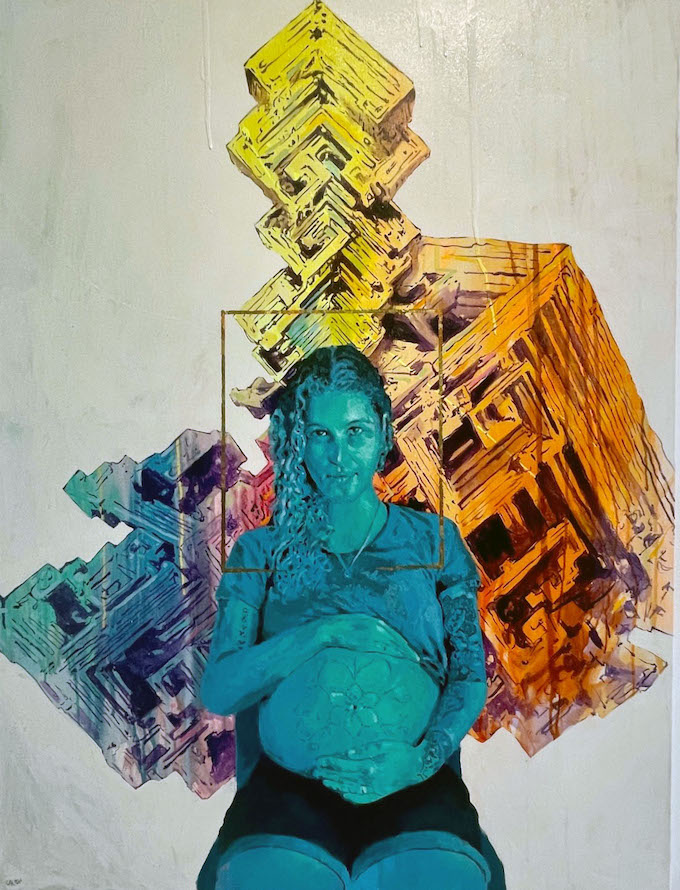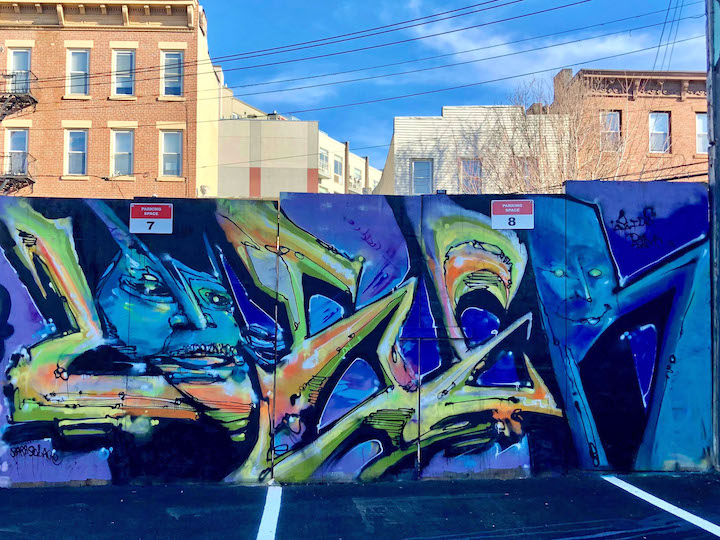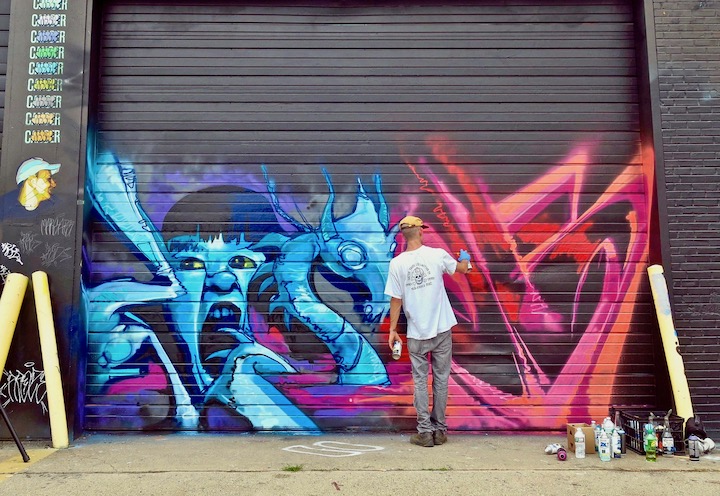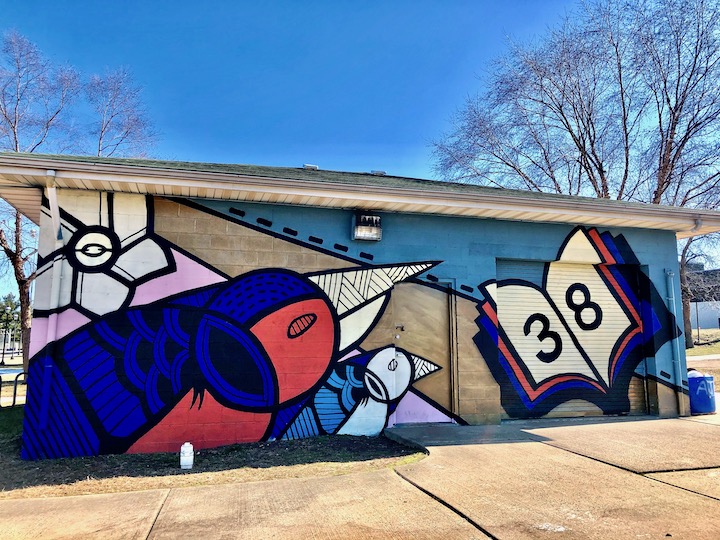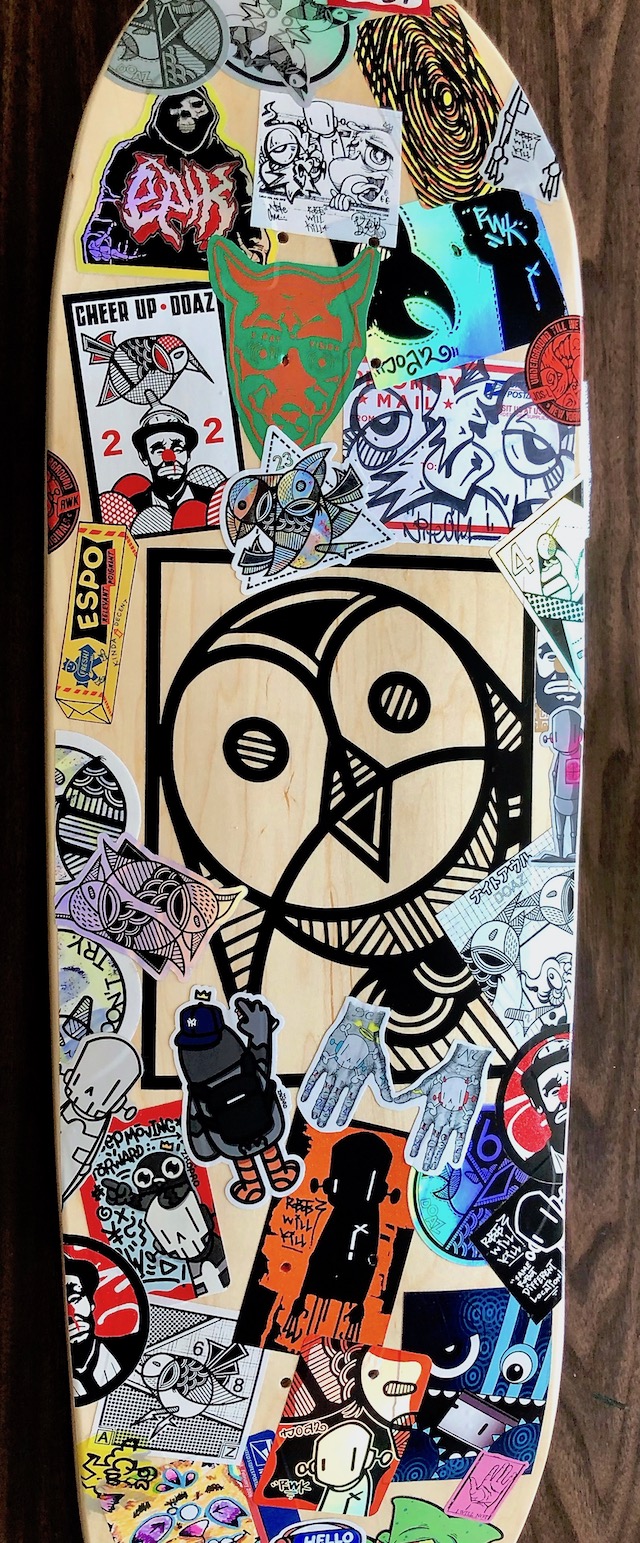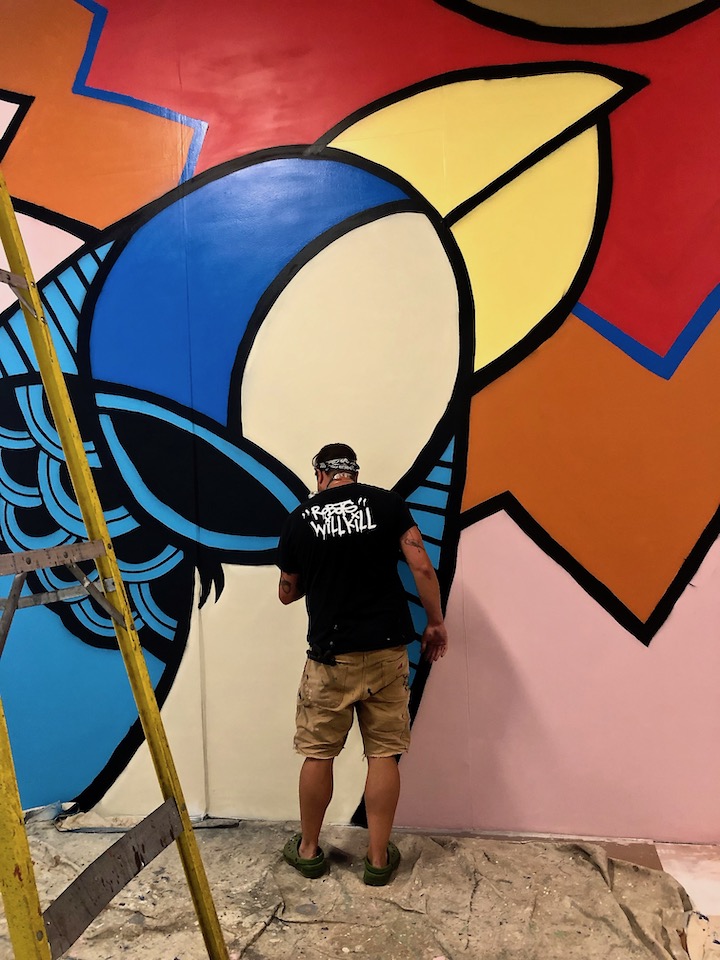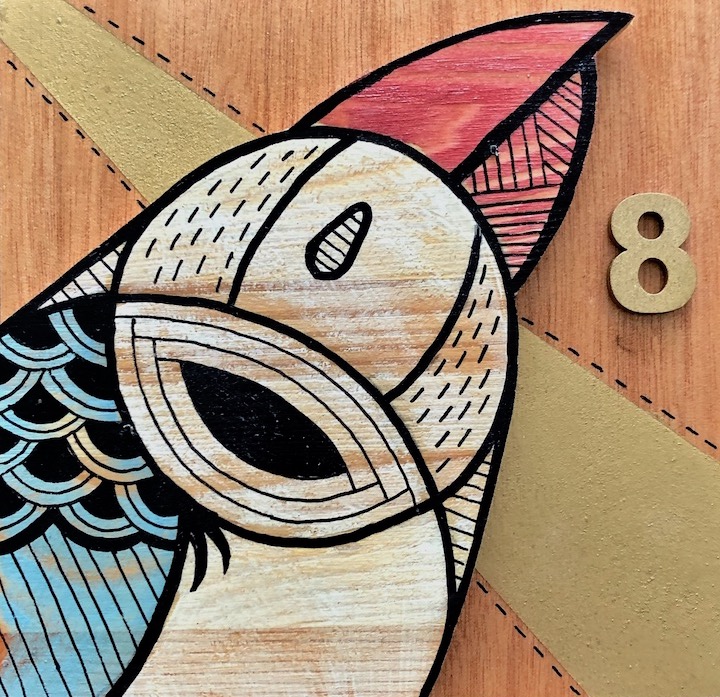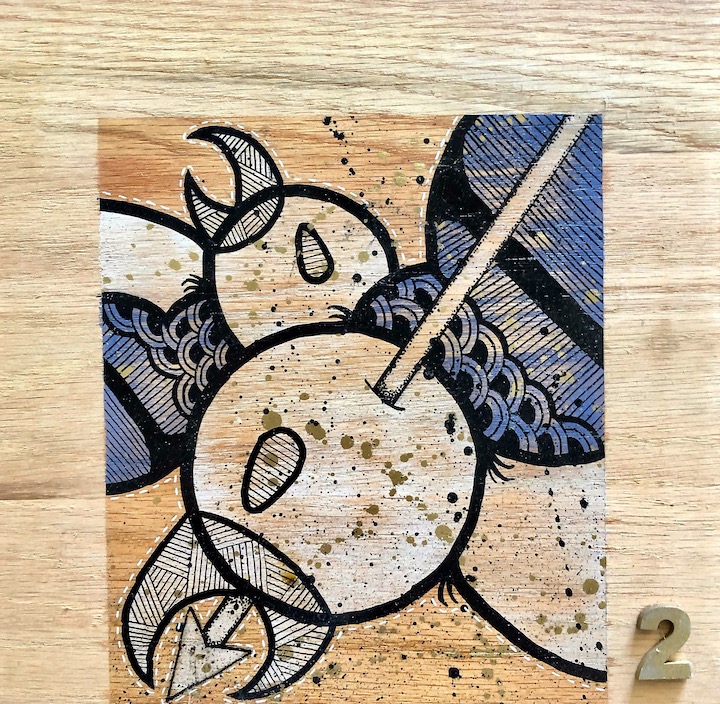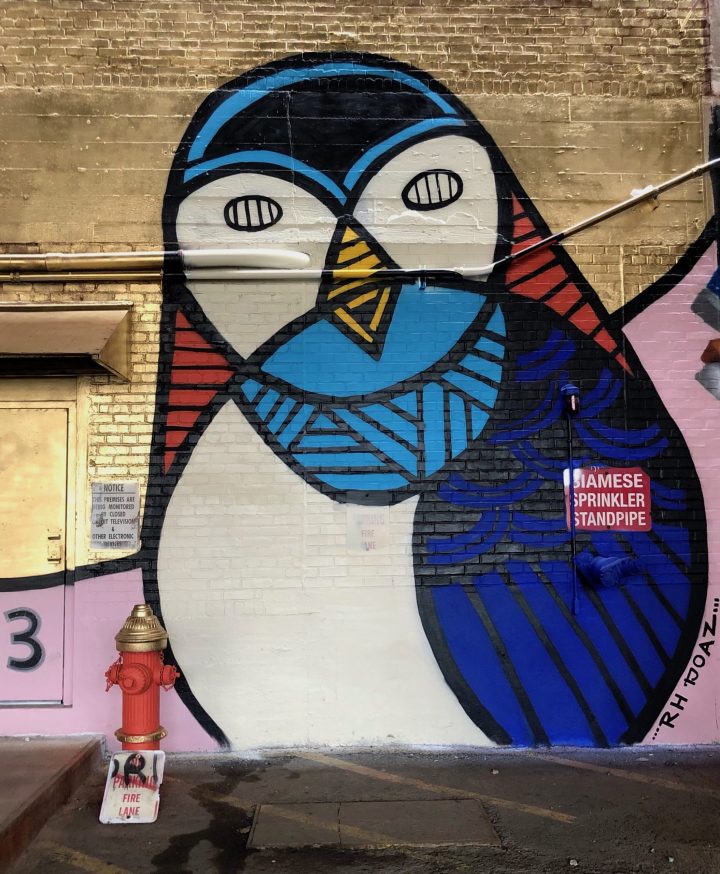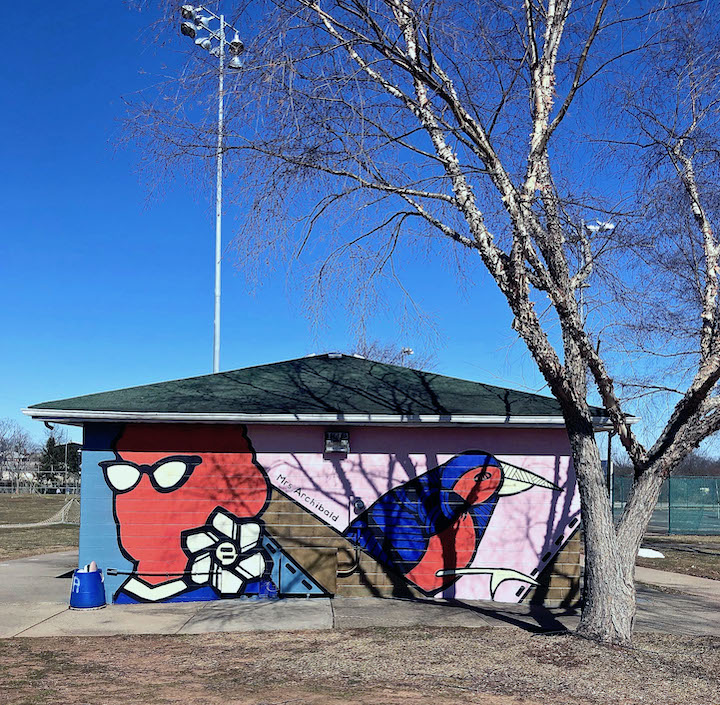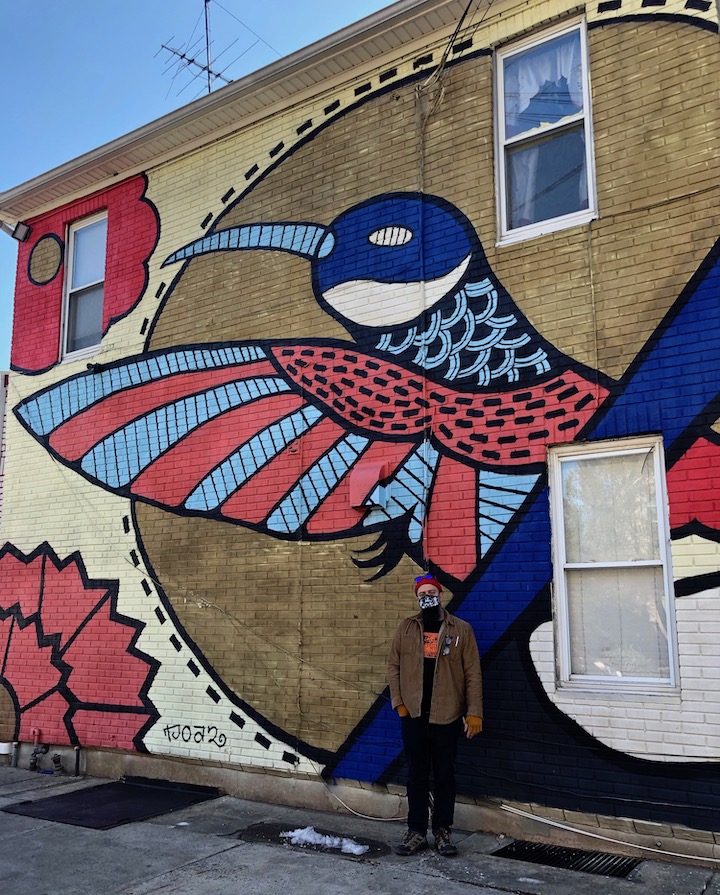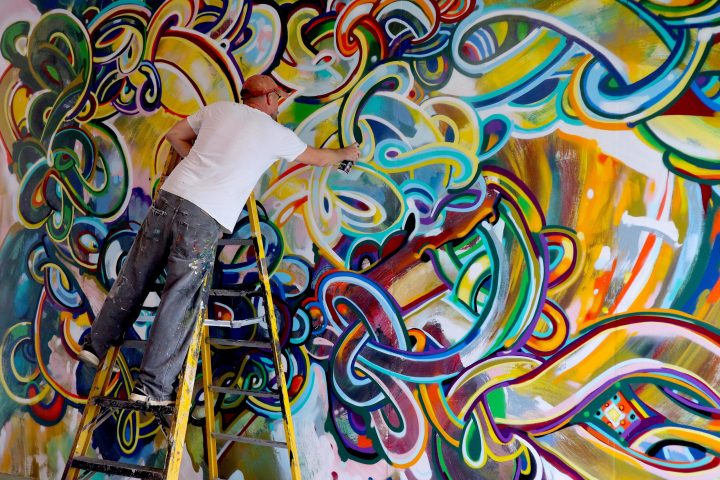
In both public and private spaces, Flemington, NJ-based artist James Kelewae aka Luv One fashions mesmerizing images that blur the line between graffiti and fine art. His distinct talents remain on view in On and Off the Streets: Urban Art New Jersey through February 27 at the Morris Museum in Morristown, New Jersey. While selecting artists to feature in the exhibit, I met up with James in Trenton, NJ and had the opportunity to interview him:
When and where did you first get up?
I first hit a public surface back in 1995 while skateboarding in the Chicago suburbs where I grew up. I was 17 at the time. But it wasn’t until much later, 2006, when I became serious about painting on city walls.
Had you any preferred surface back then?
Brick. I liked the way it absorbs paint. I also liked getting up on trains with oil sticks.
Did anyone or anything in particular inspire you at the time?
The thrill of breaking rules. I liked the rush that I got.
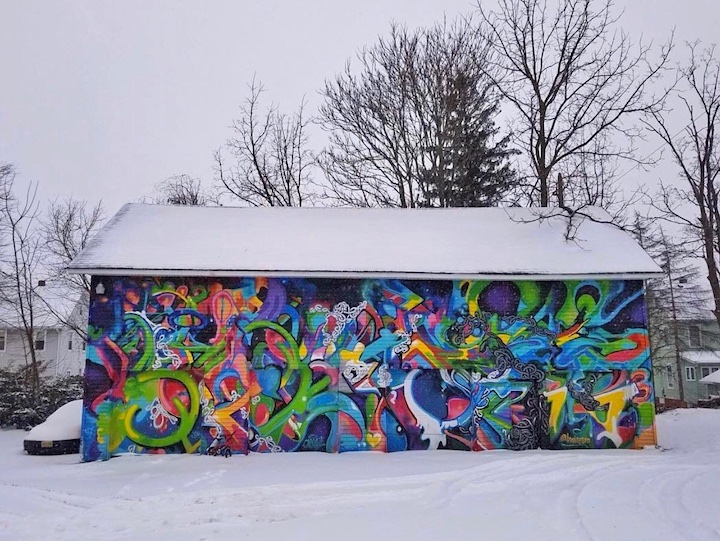
Do any early graffiti-related memories come to mind?
In 2007, Will Kasso and I painted a two-block wall along the main bridge in Trenton. We painted in daylight pretending we had permission. It was so much fun!
Do you or did you belong to any crews?
I was a co-founder of the SAGE Coalition, a diverse group of artists dedicated to planning and producing inner-city beautification projects. And I’ve painted with Trenton’s Vicious Stylez Crew .
Would you rather work alone or collaborate with others?
It’s more fun with others, and you can accomplish more. But egos often get in the way.
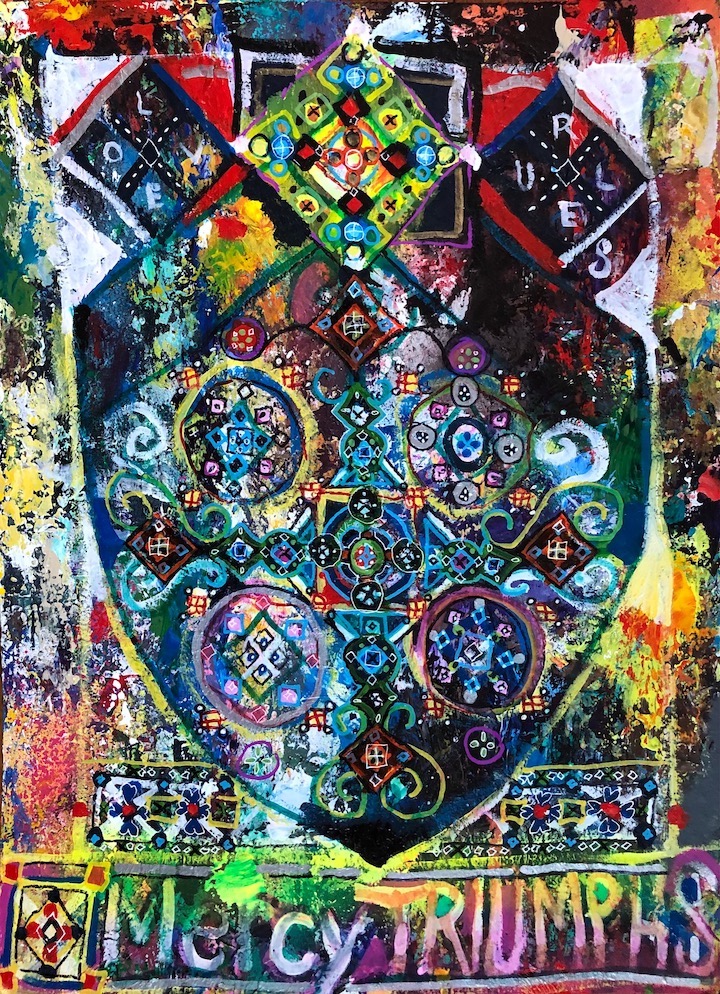
Is there anyone in particular with whom you’d like to collaborate?
I’d like to collaborate with Cern, Chor Boogie, Other and José Parlá.
Have you any thoughts about the street art/graffiti divide?
I’m interested in bridging the gap. I use mostly spray paint, a graffiti tool, in a street art aesthetic. But each is entitled to its own voice.
How do you feel about the movement of graffiti and street art into galleries and museums?
I have mixed feelings. On one hand, it dilutes the culture, but graffiti and street artists should get acknowledged for their hugely influential work by a broader audience.
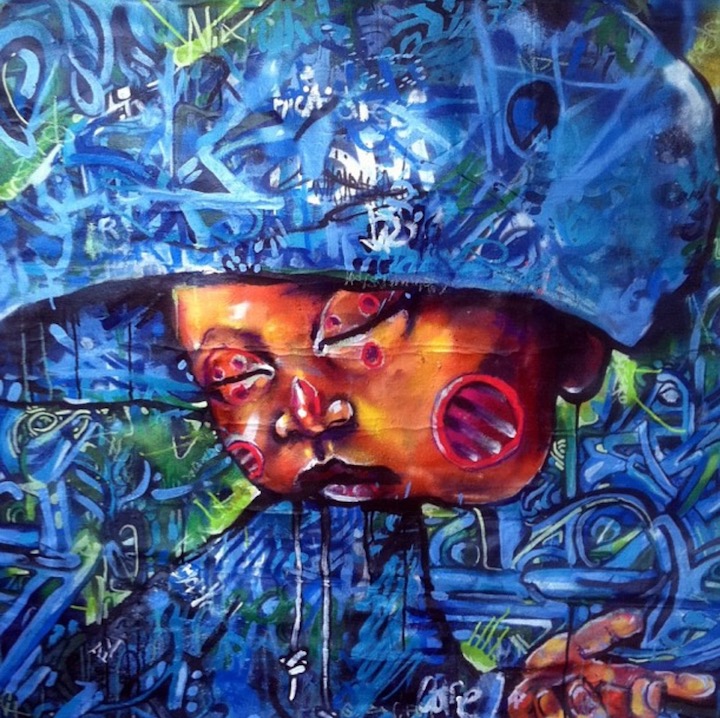
What about the corporate world? How do you feel about street artists and writers collaborating with corporations?
The work that I did for Vonage helped me make the down payment to the house I now own. Depending on the corporation and the circumstances, the experience can be a positive one.
How do you feel about the role of social media in this scene?
I don’t like it. I’d rather spend my time creating art.
Have you a formal art education?
Yes! I graduated from SVA with a degree in Illustration.
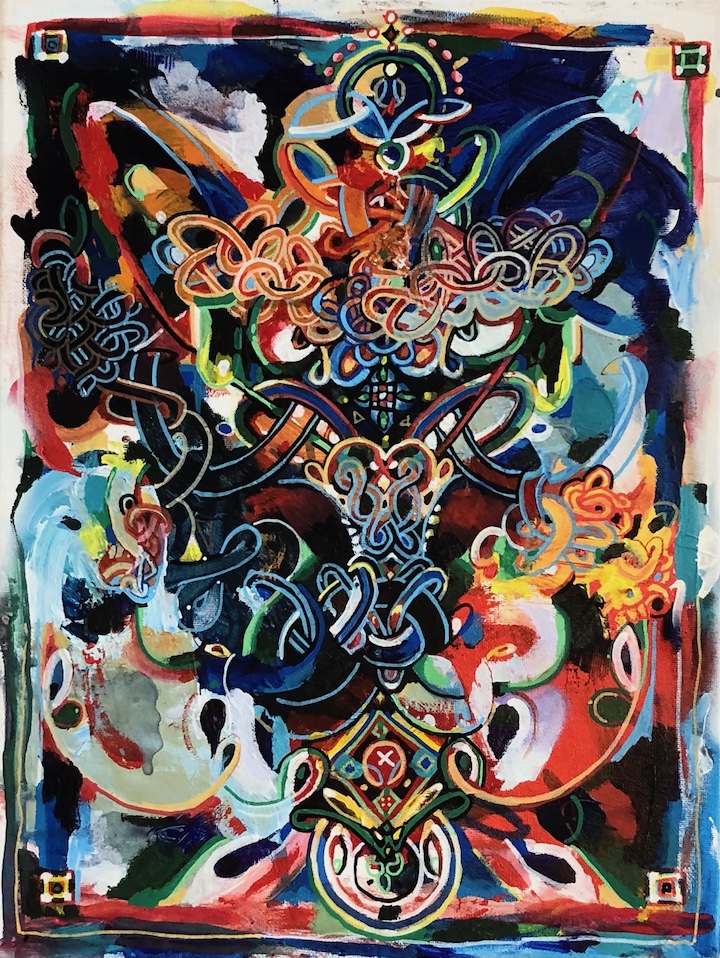
How would you describe your ideal working environment?
Outdoors.
What inspires you these days?
All the visual information that’s around me. I take in everything!
Are there any particular cultures that have influenced your aesthetic?
Celtic art…its colors and patterns; the Book of Kells, medieval art, hip-hop, skateboarding and punk rock.
That’s quite eclectic. Is there a central theme that ties your work together?
Interconnectivity…building bridges…moments of intersection and overlap.
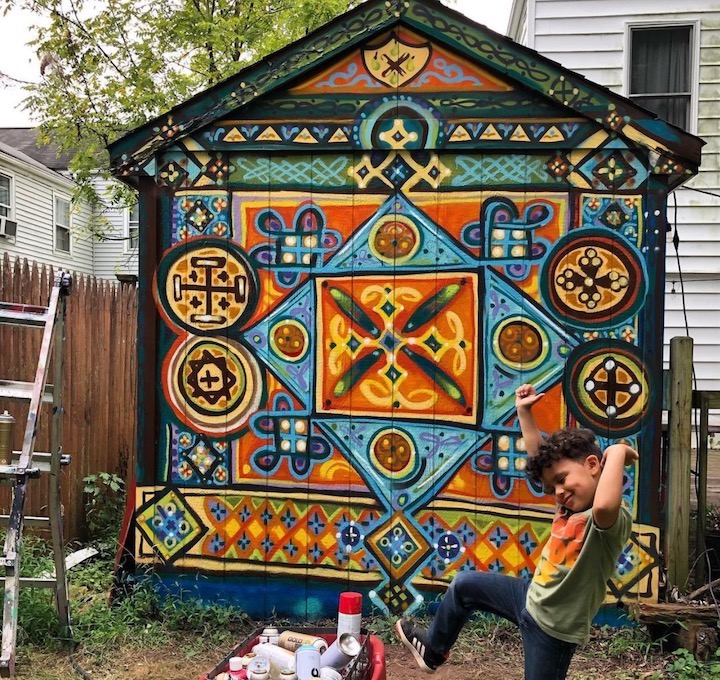
Do you work with a sketch-in-hand or just let it flow?
I find myself working more and more freehand.
Are you generally satisfied with your finished piece? And how do you know when it’s finished?
I always want my next piece to be better than my last. I know when it’s finished when I’m sick of it.
How important are others’ reactions to you?
Ten years ago, I was super concerned about others’ responses to my work. Currently, they are not important at all.
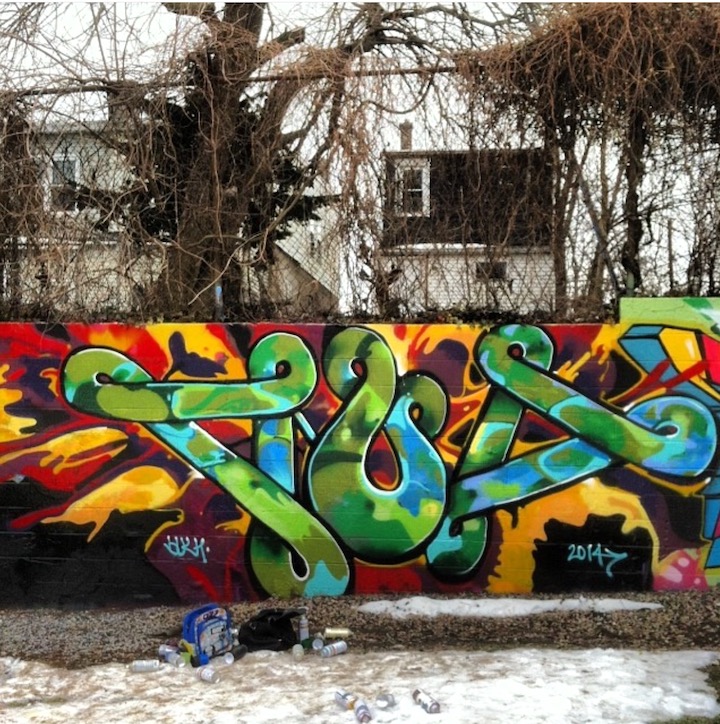
How has your work evolved through the years?
My style was originally very illustrative. I focused initially on portraits. These days my style is largely abstract.
Have you any preferred colors?
I love them all.
What media do you currently most enjoy working with?
Mixed media and spray paint.
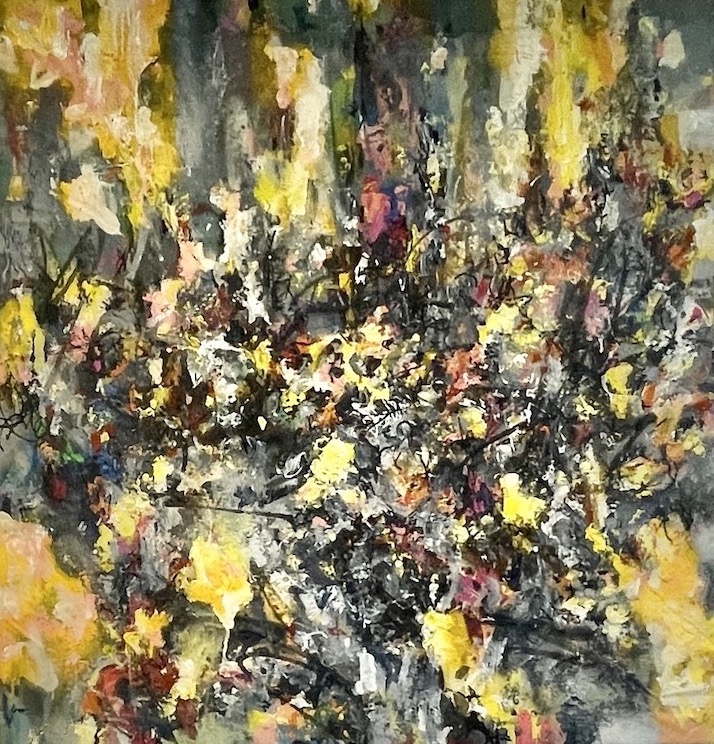
How has the work you’ve done on the streets impacted your studio work?
It’s my studio work that has most impacted my street art. It’s tightened my art on the streets. My street art is calmer than it used to be.
How does the subject matter differ?
When I paint on the streets, it’s important that I take the community and the site into consideration. It’s important that it be accessible. My studio work is largely personal.
How has your studio work evolved in the past several years?
It’s more spiritual in its sensibility and its theme.
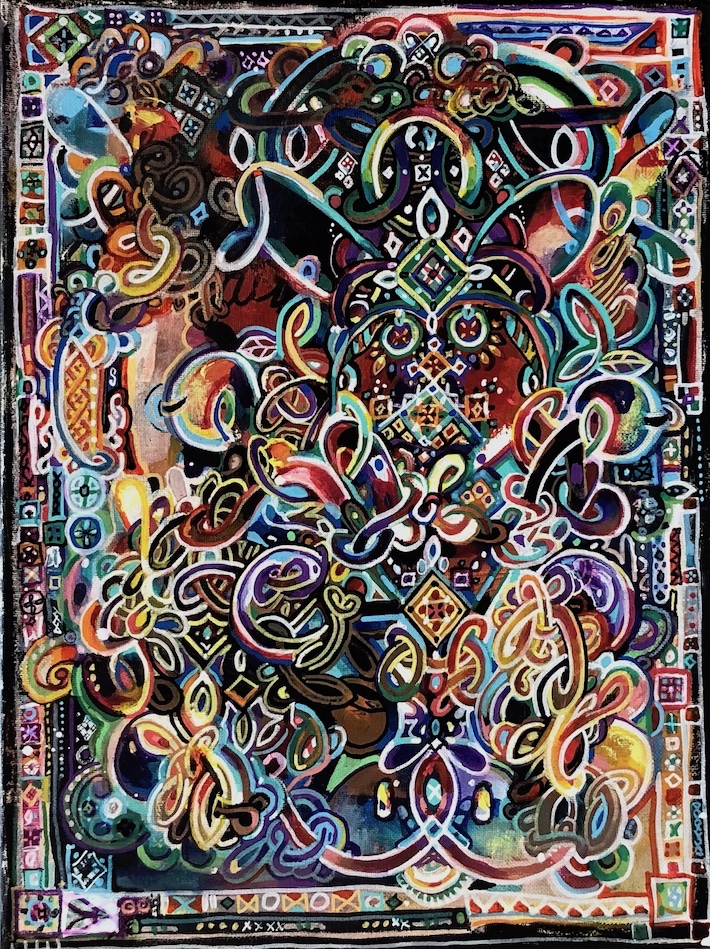
How long do you generally spend on a studio piece? On a street art work?
I work on my studio pieces over time – a few hours at a time over a period of a few months. When I paint outside, it’s generally for 4-5 hours a day over five days.
What percentage of your time is devoted to art?
It’s always in my brain, but because of family responsibilities, I can only devote about 40% to it.
What do you see as the role of the artist in society?
It is to challenge one’s perception of accepted norms. It is to reshape society. To share the human experience…to bear witness and to capture a moment in time.
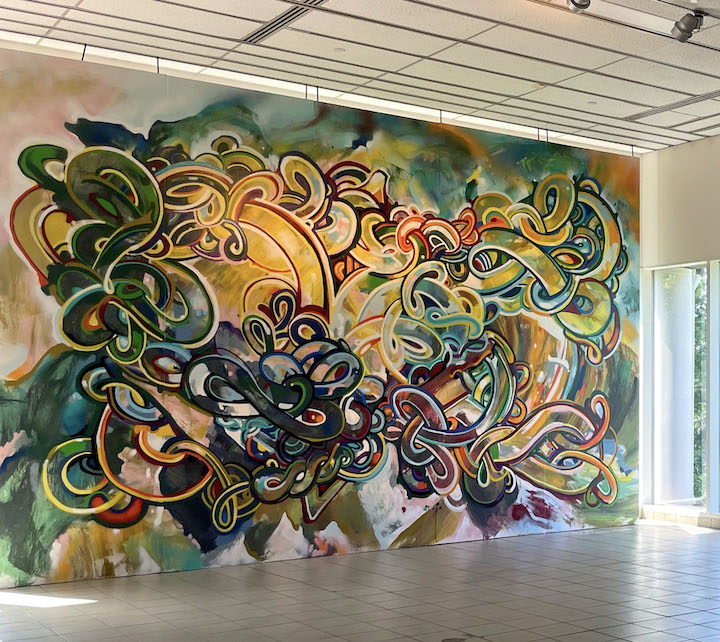
What’s ahead?
More canvas work.
Good luck!
Interview conducted and edited by Lois Stavsky
Photo credits: 1 Sara C Mozeson; 2, 4, 6 & 7 Courtesy of James Kelewae; 3, 5, & 9 Lois Stavsky 8 & 10 Rachel Alban
